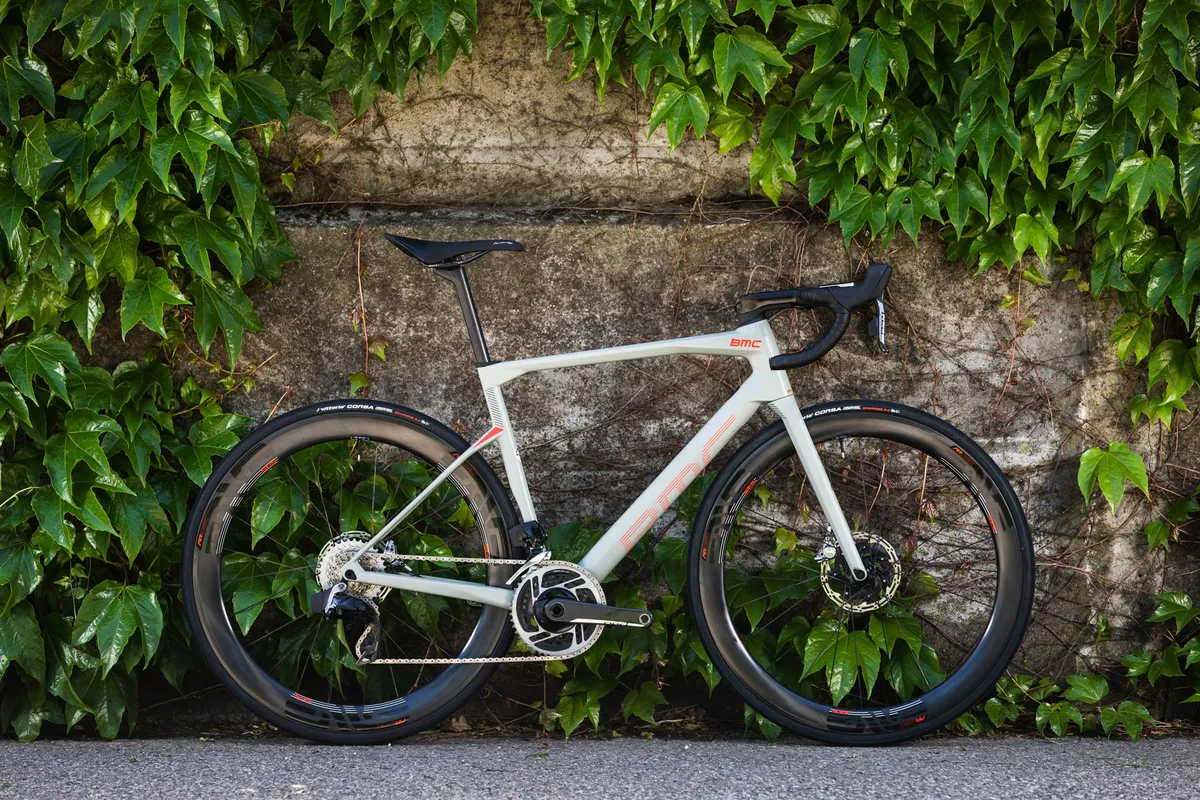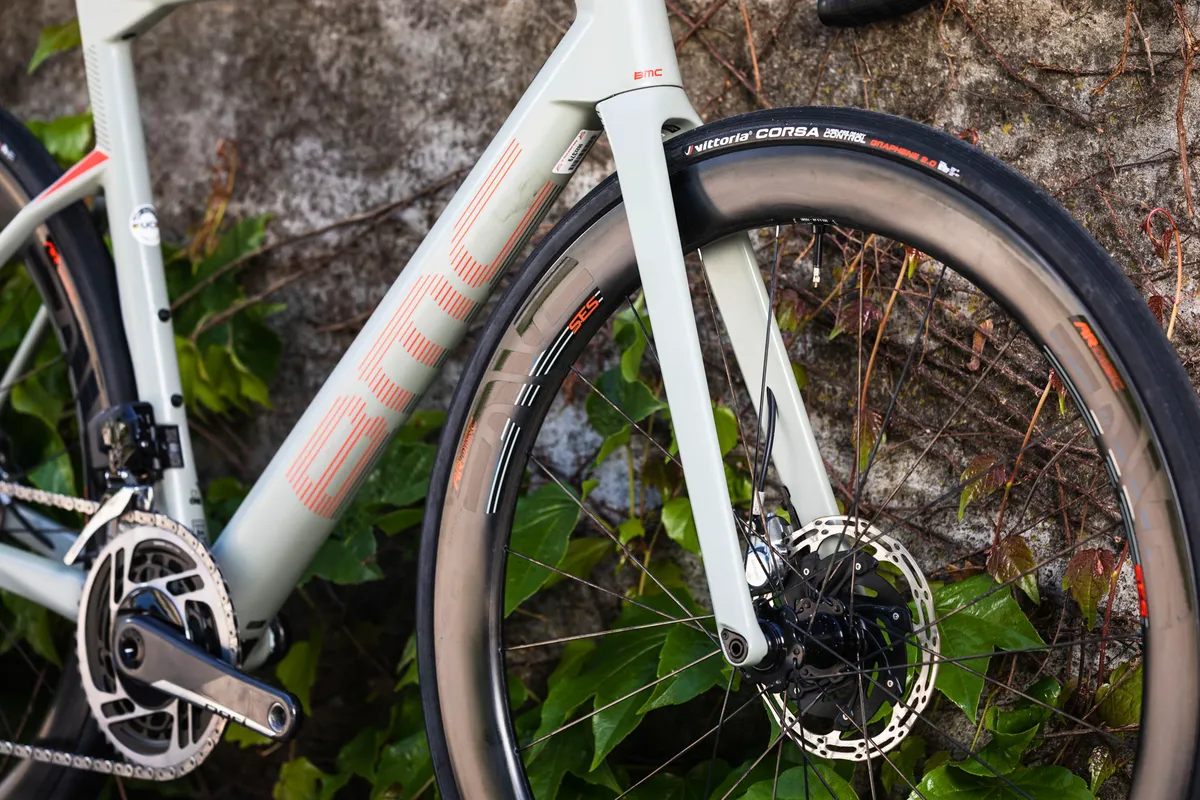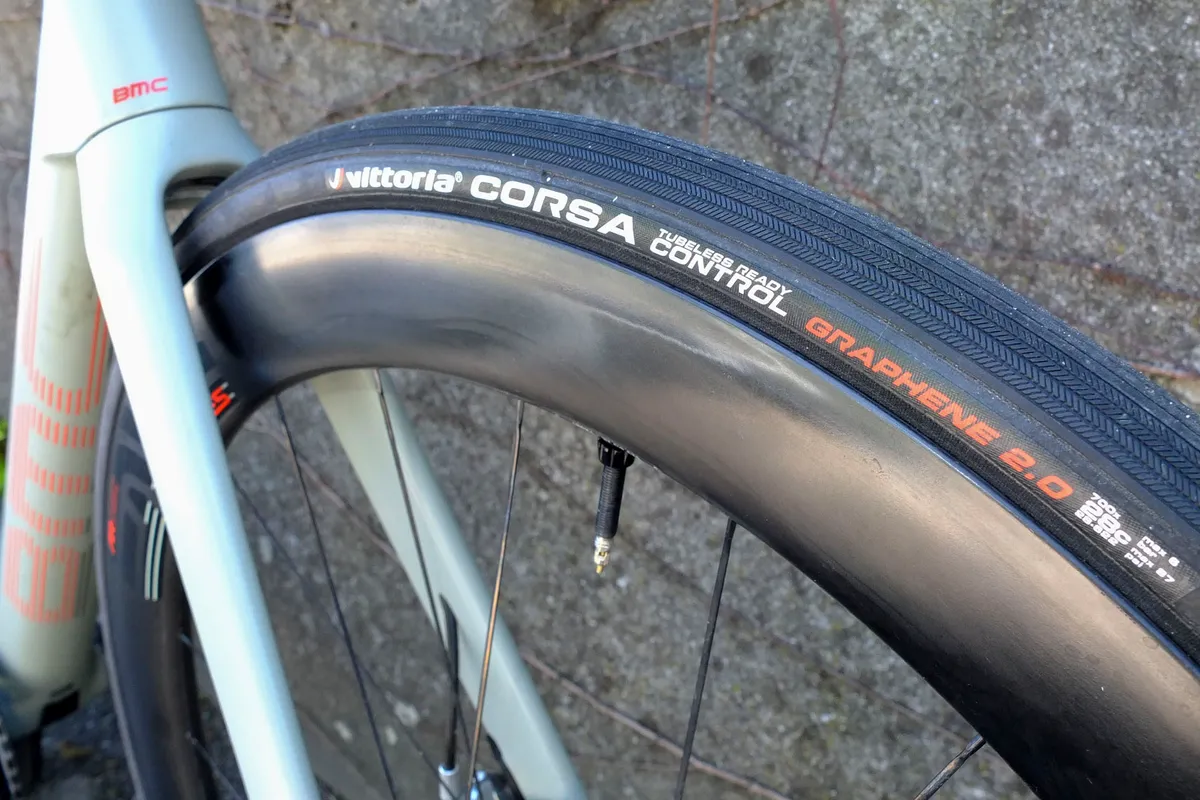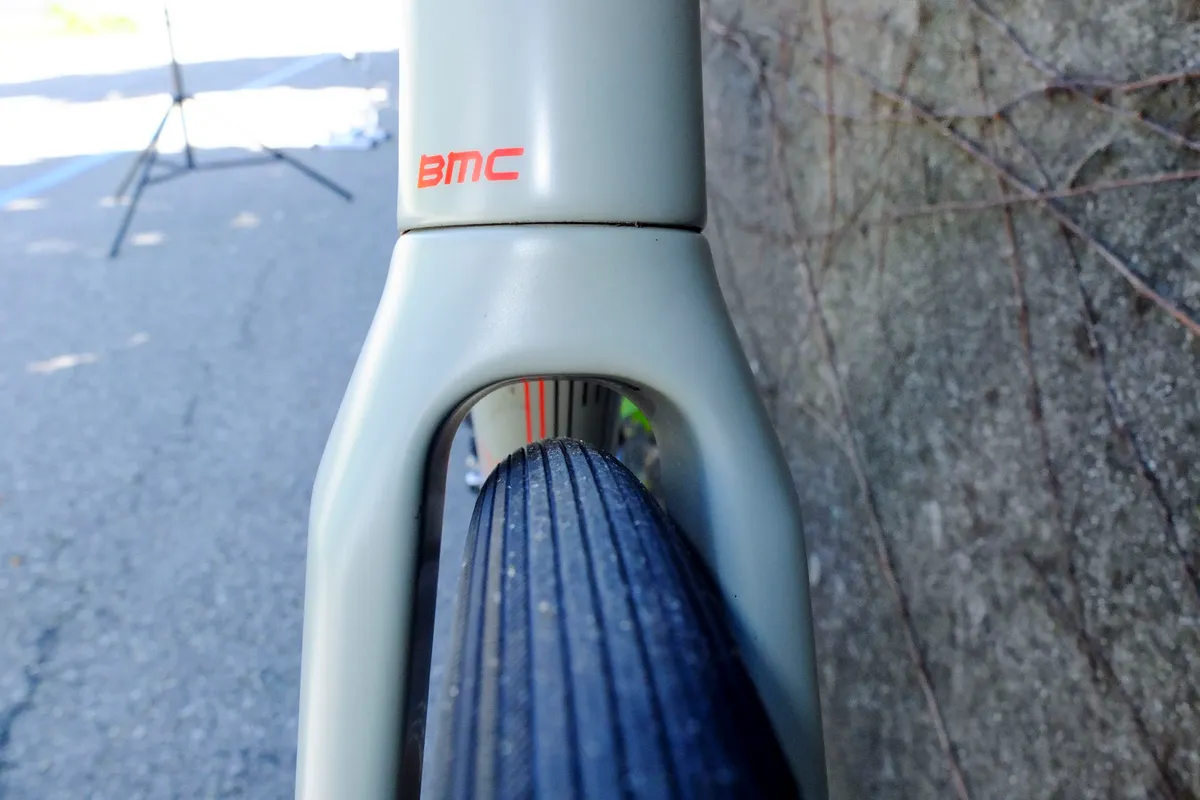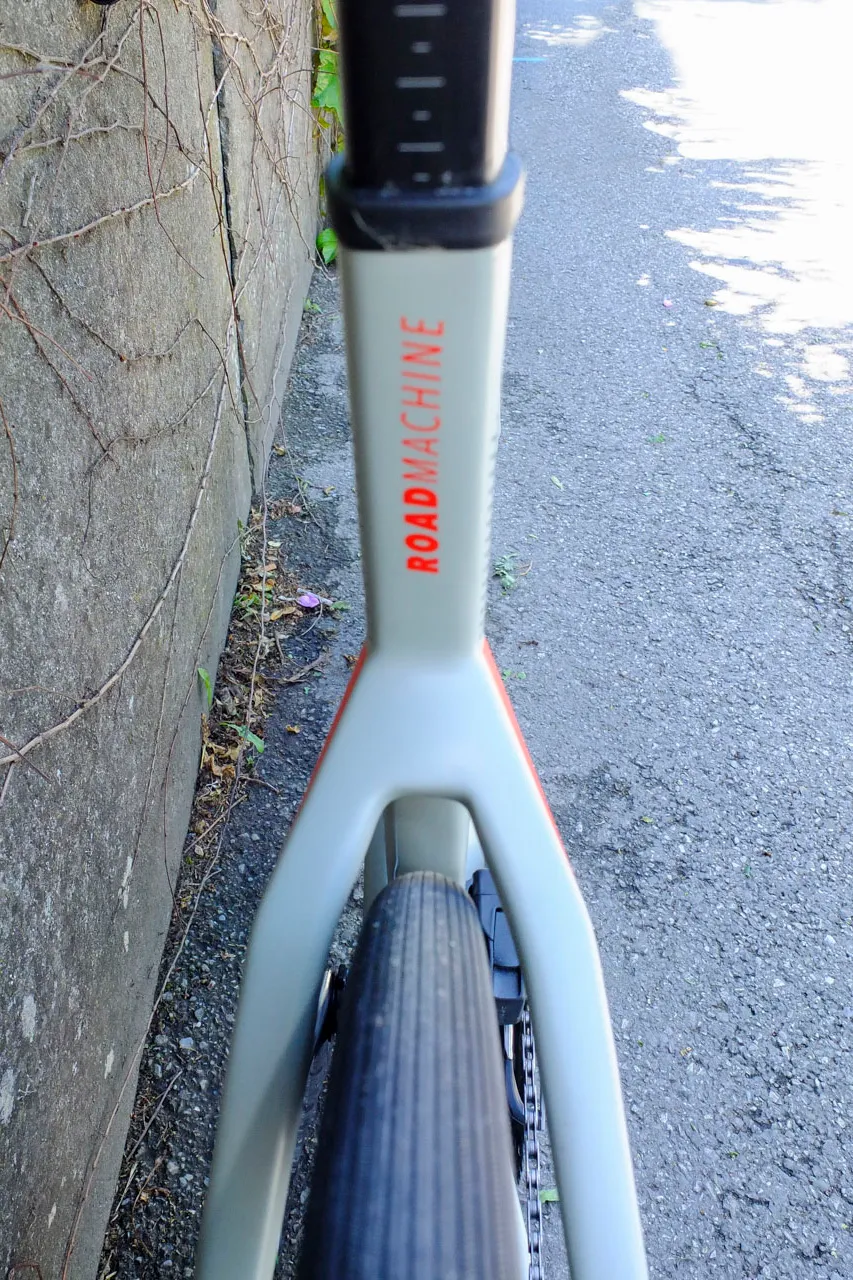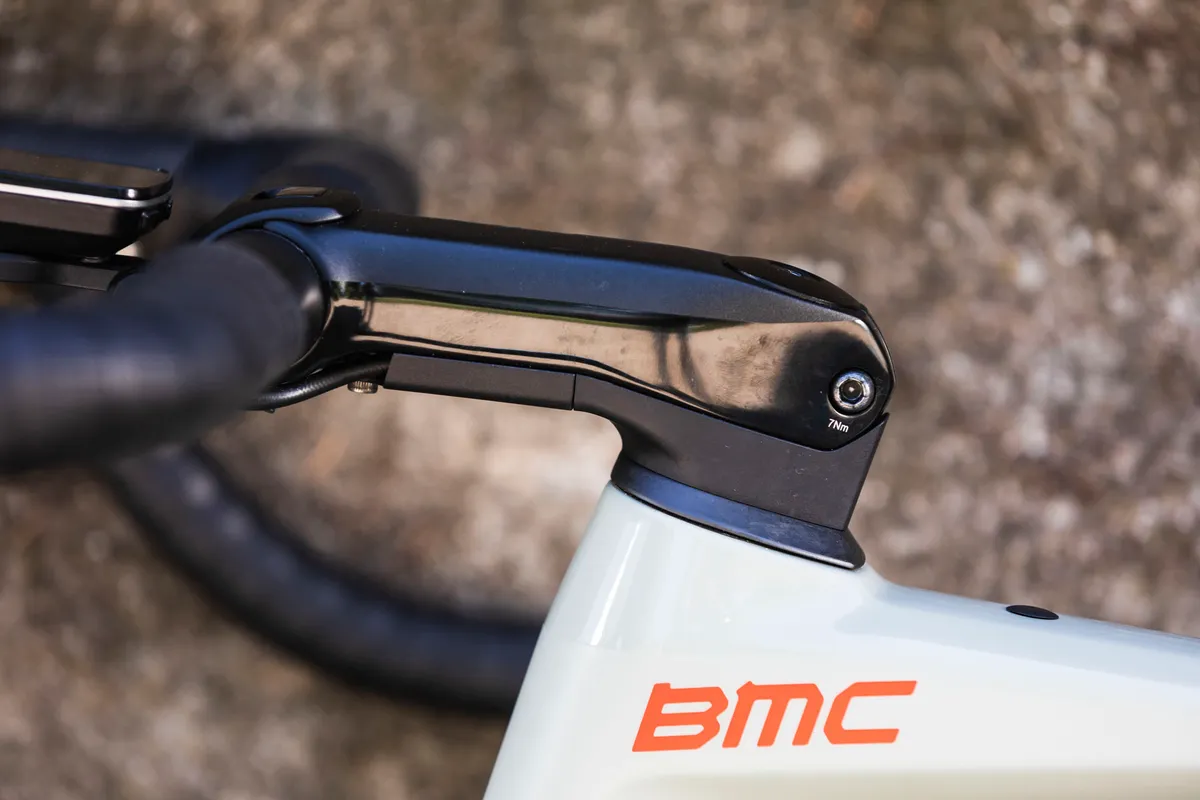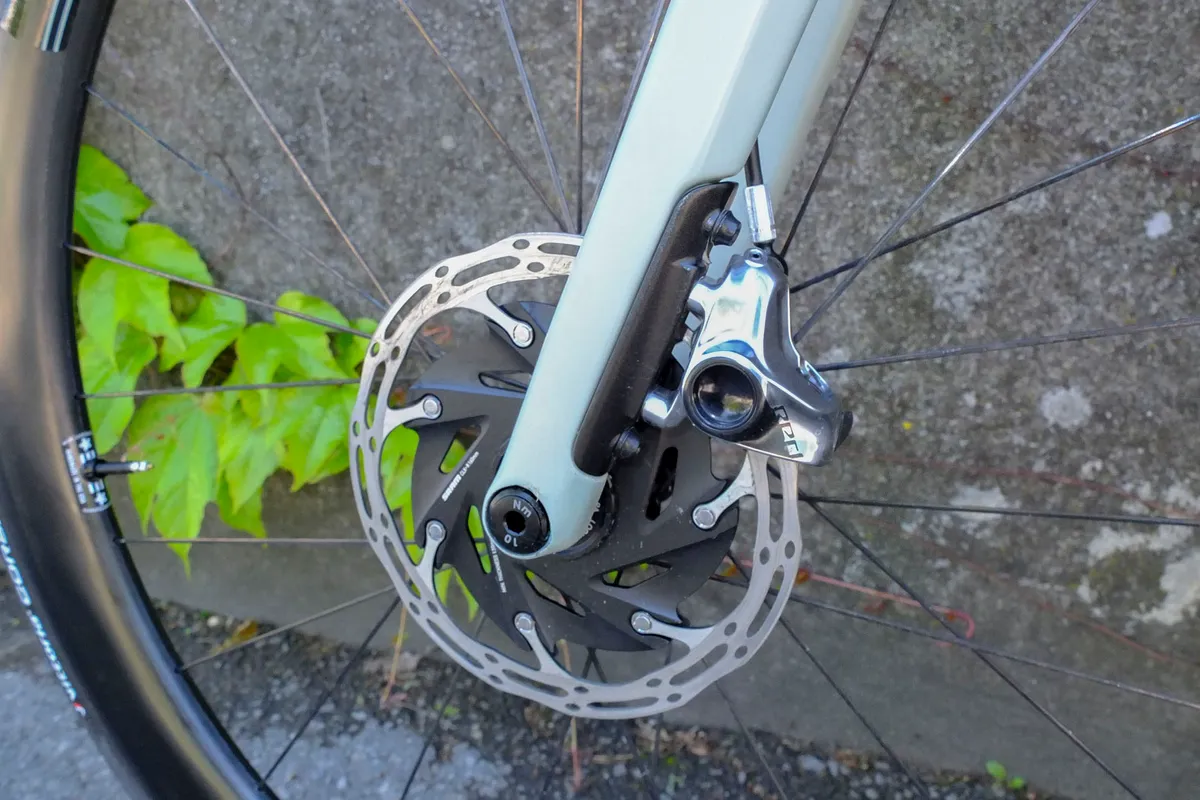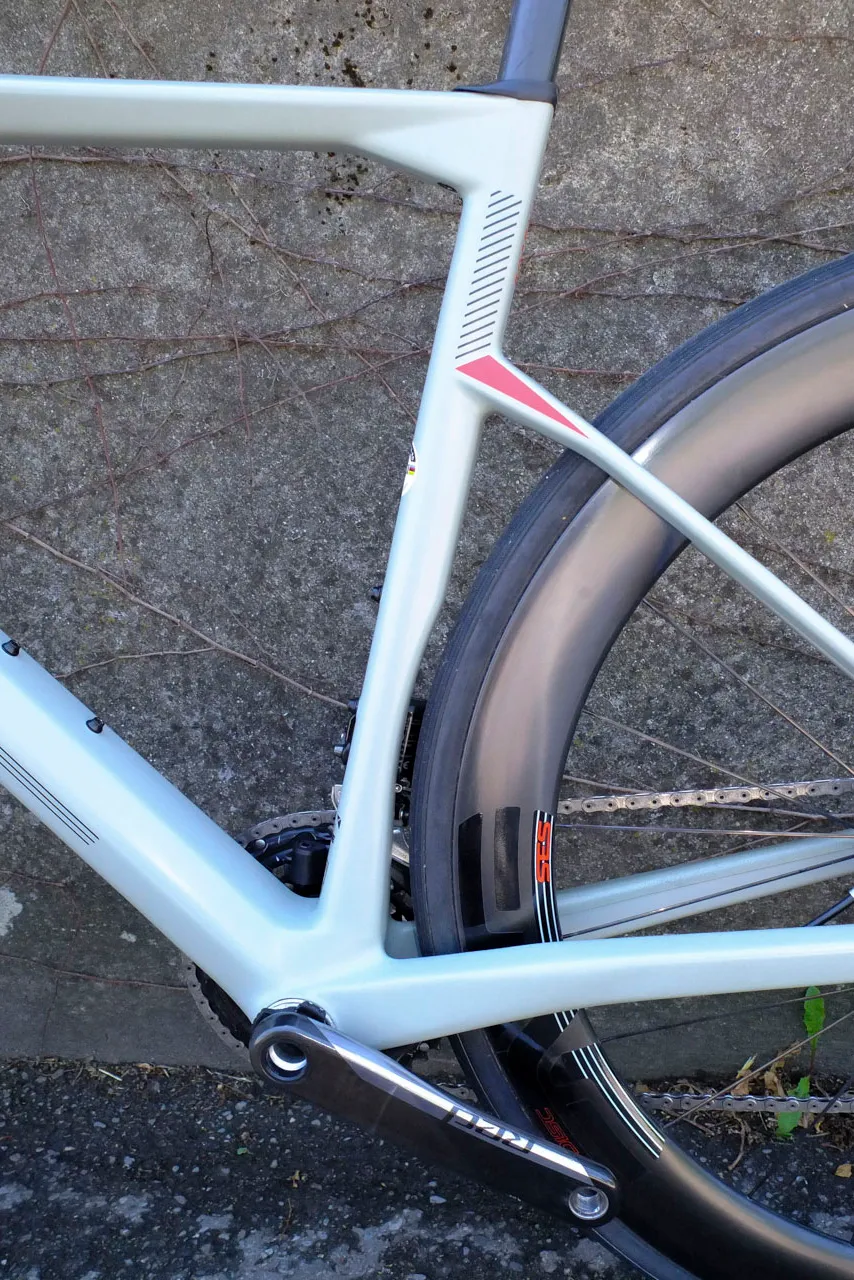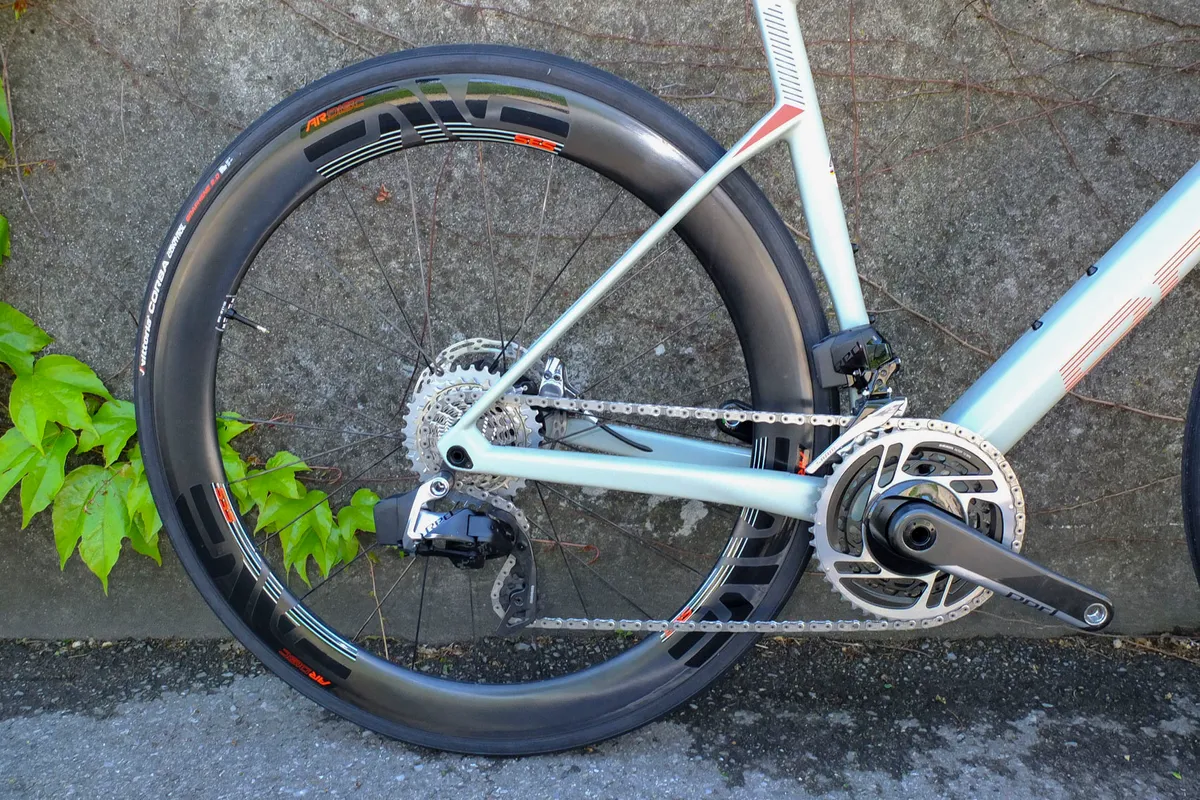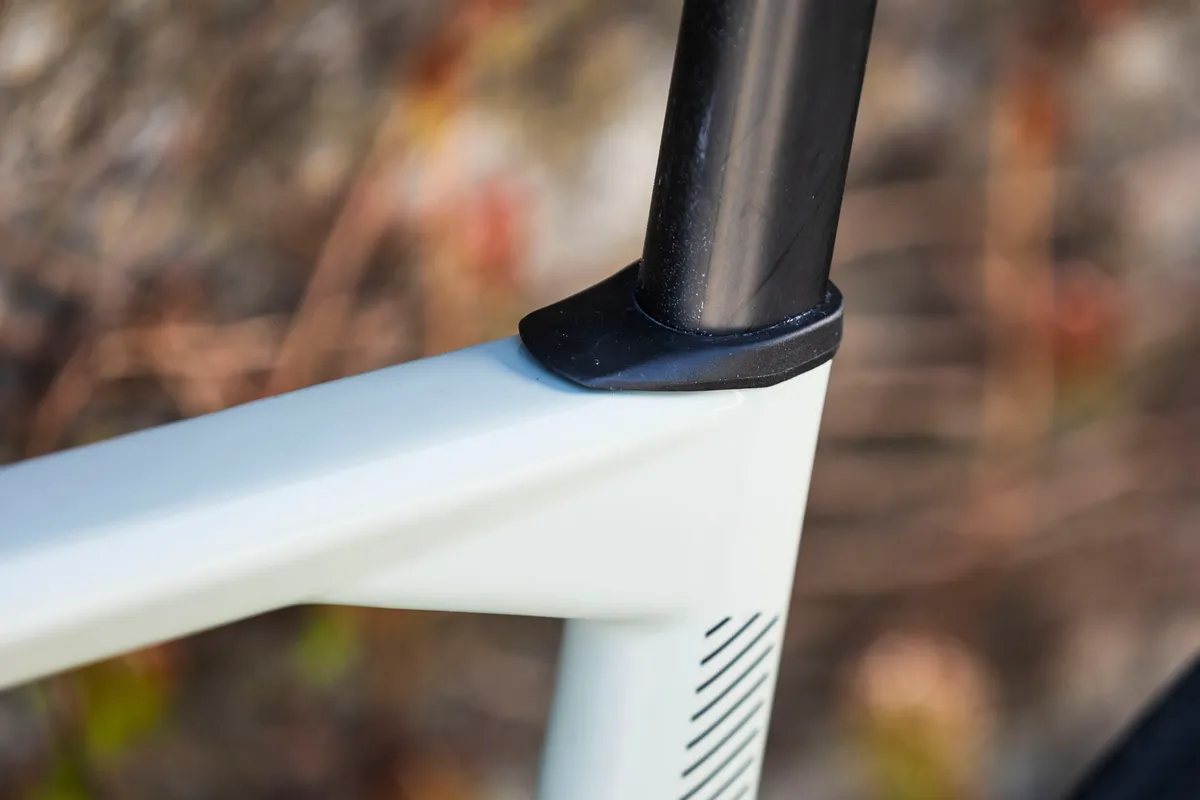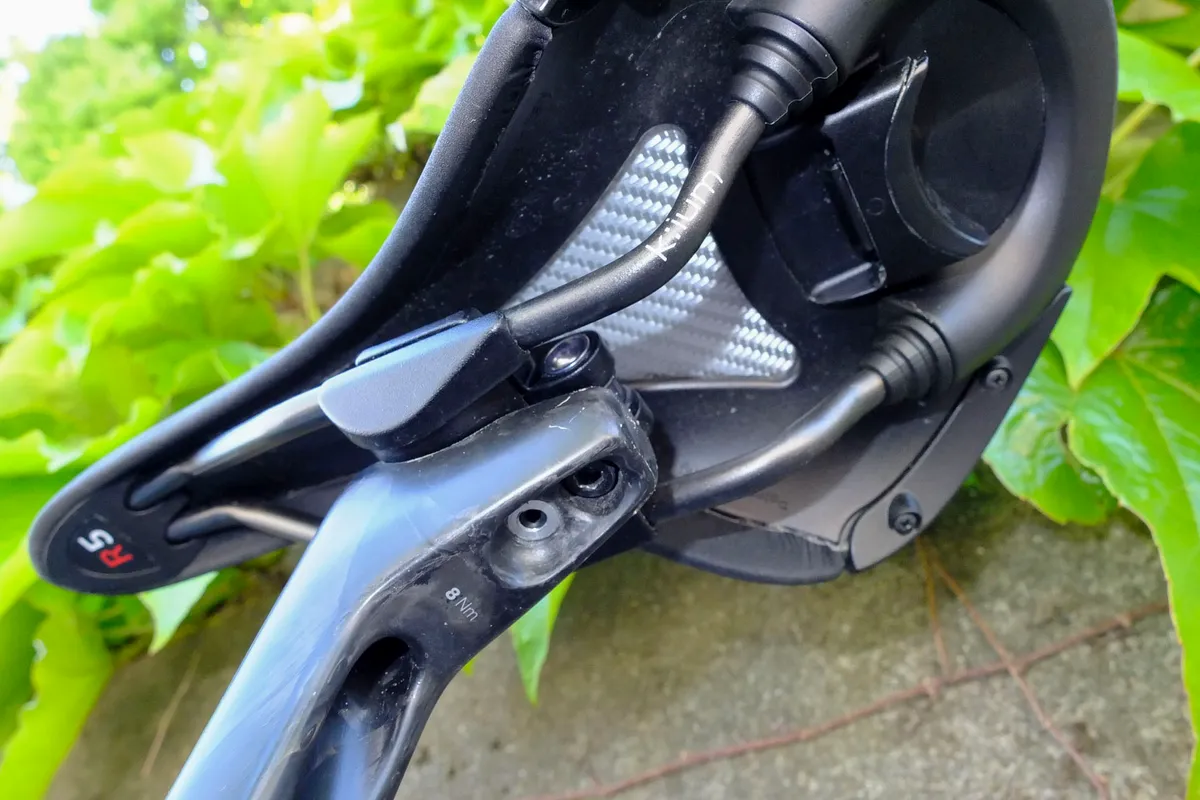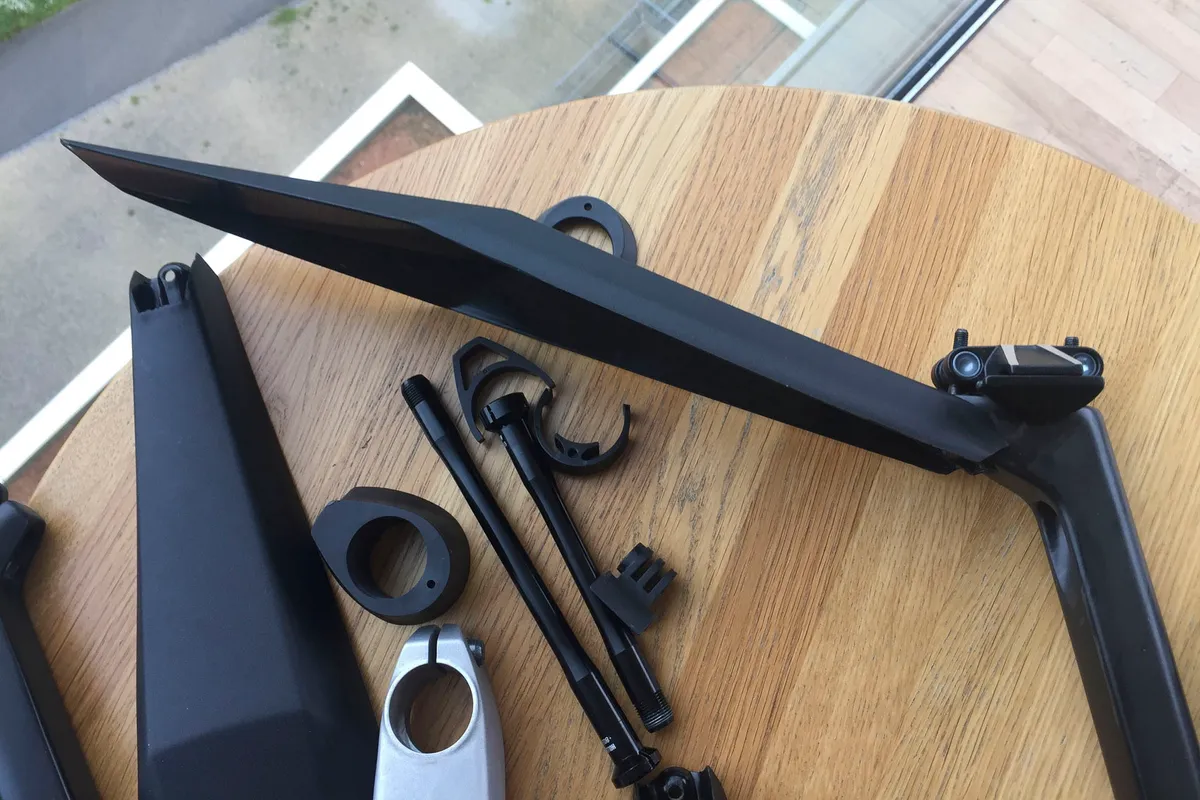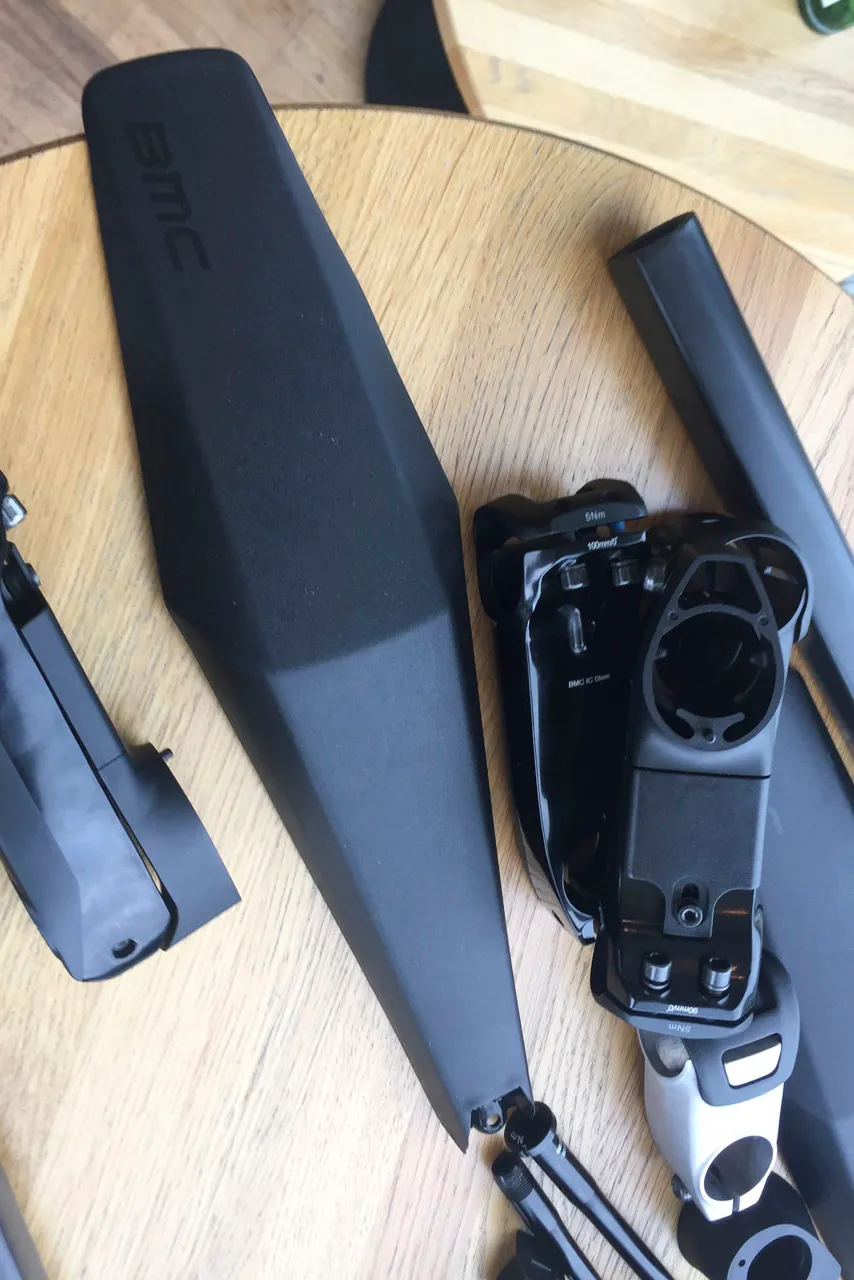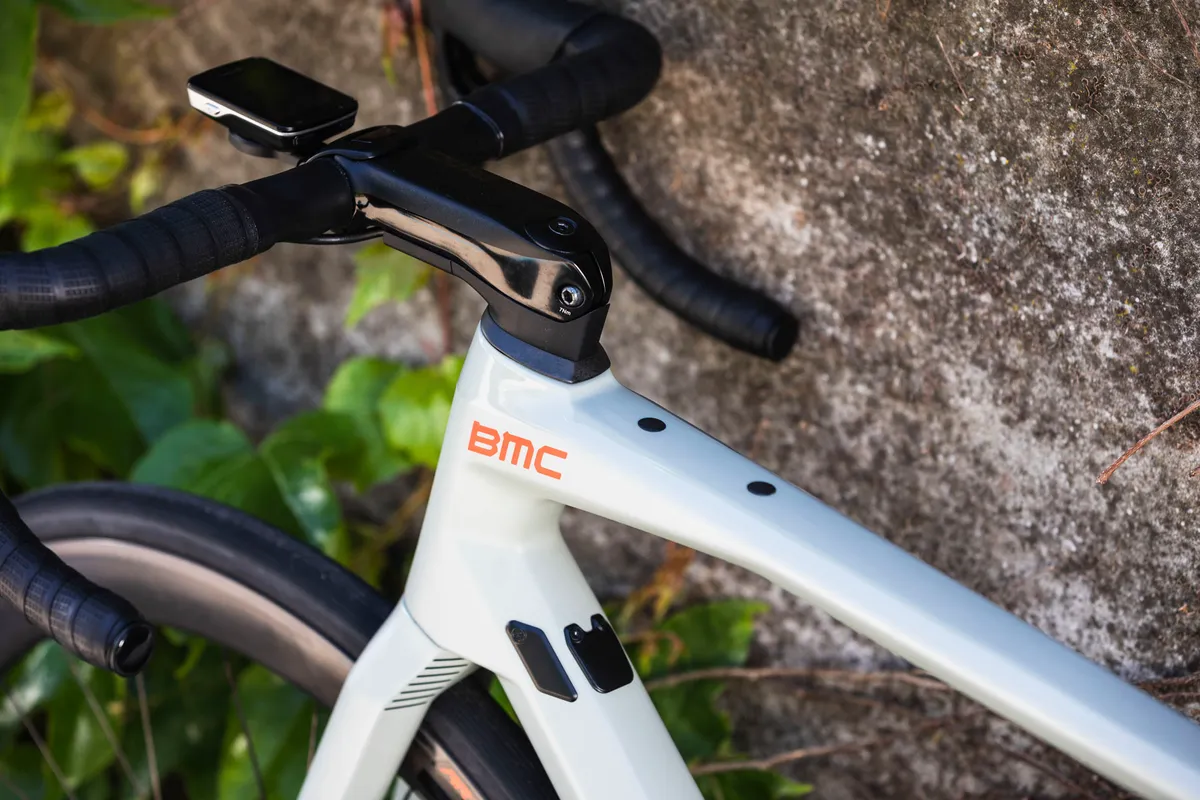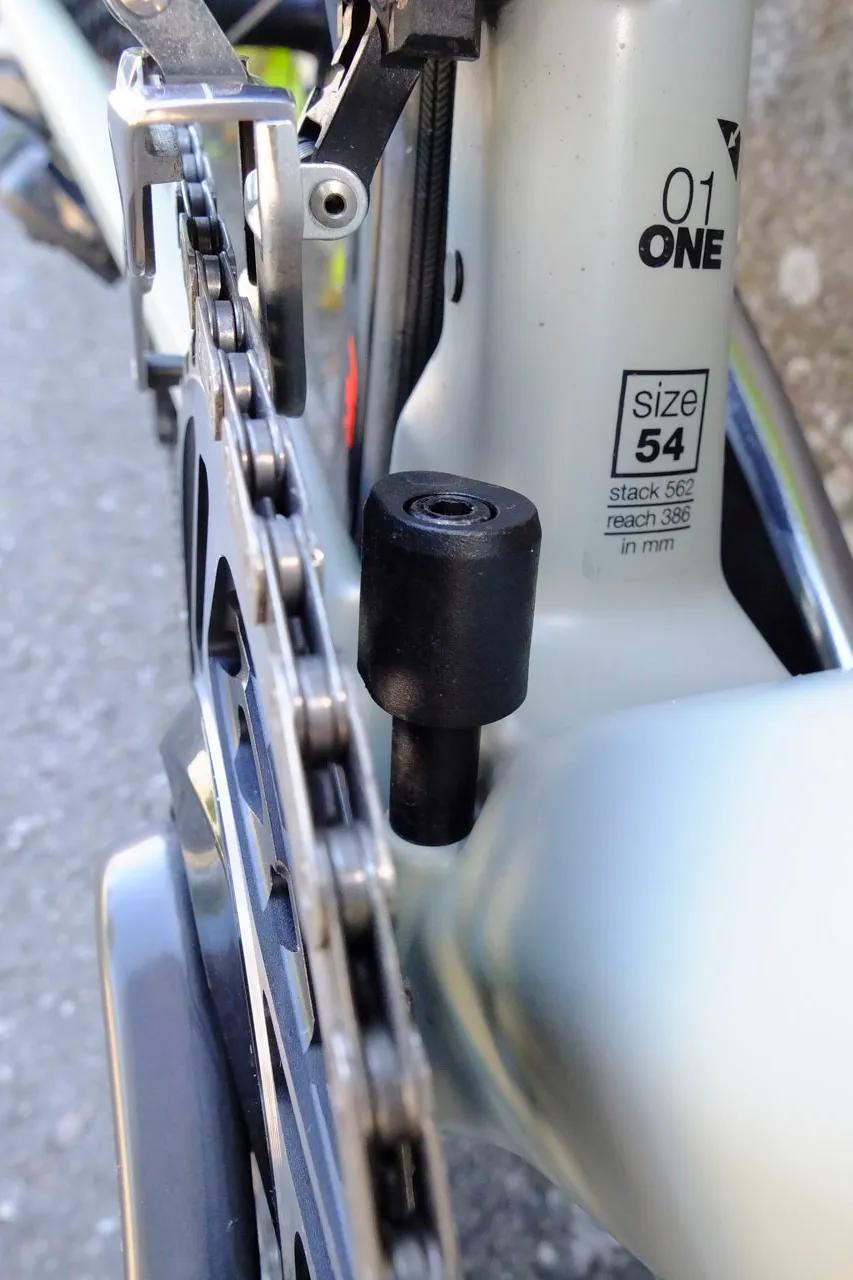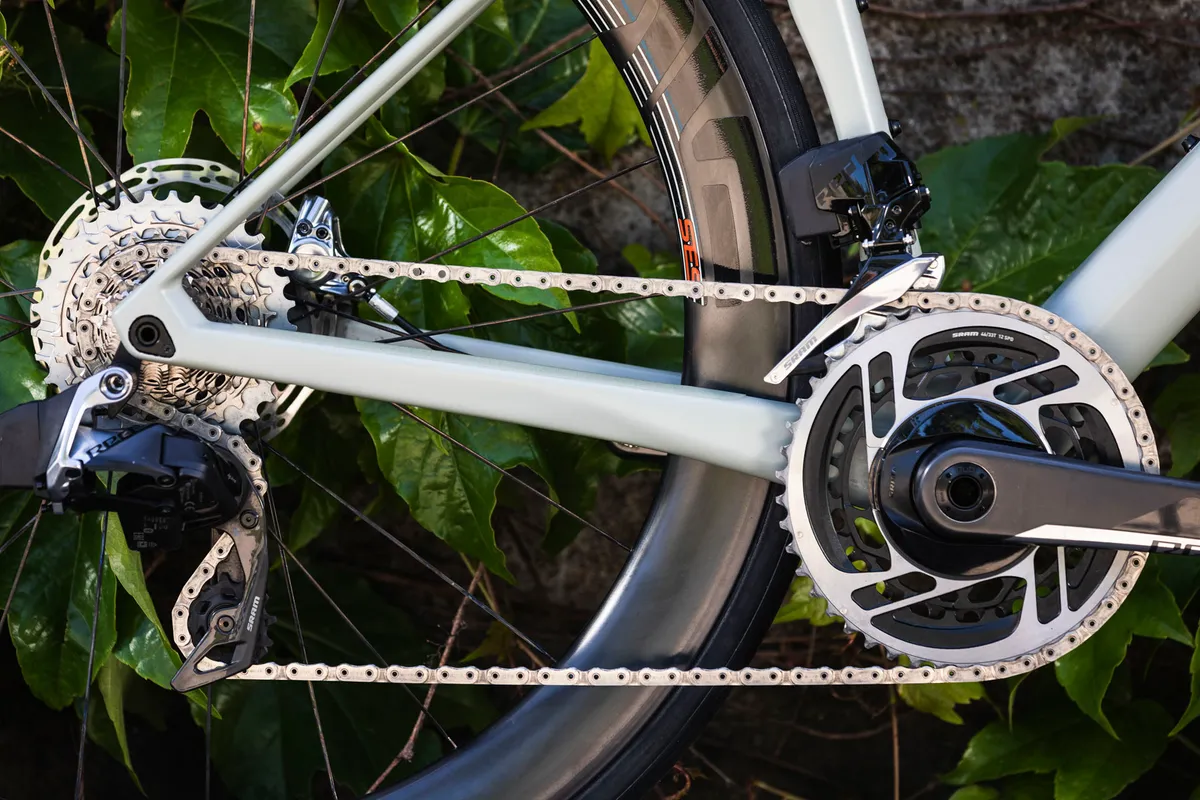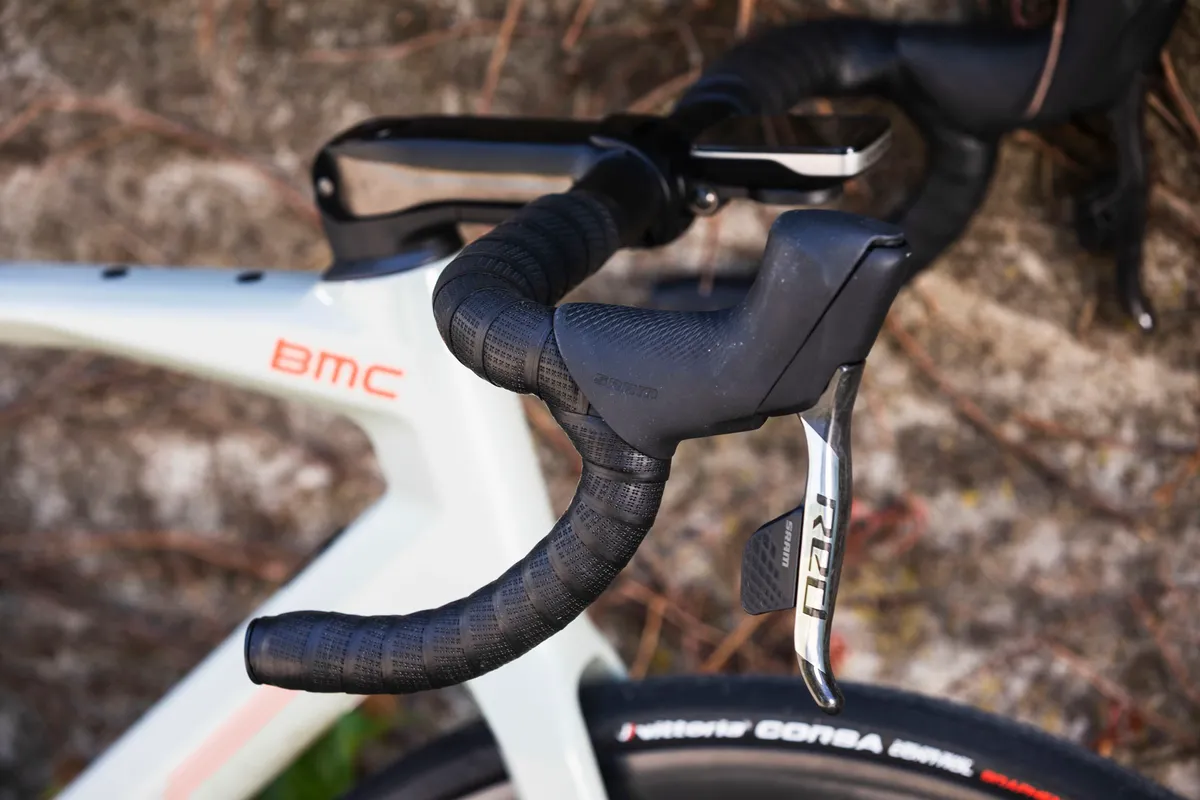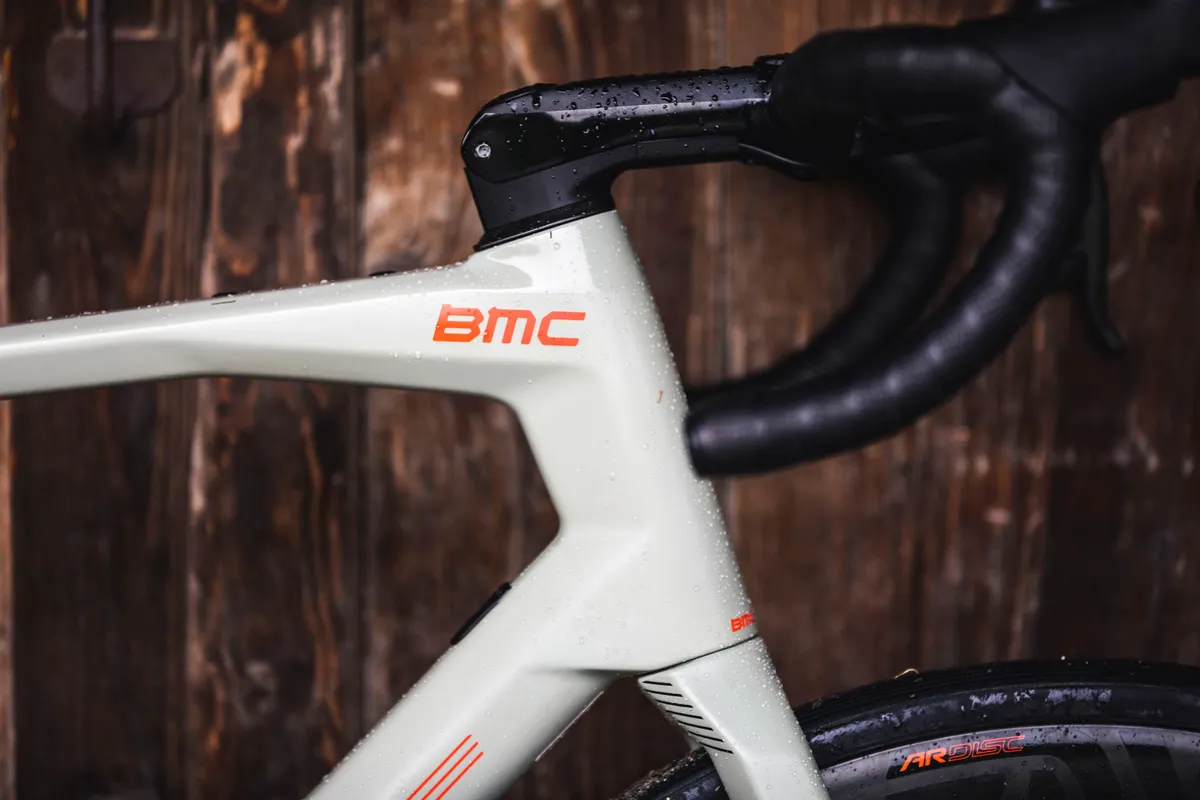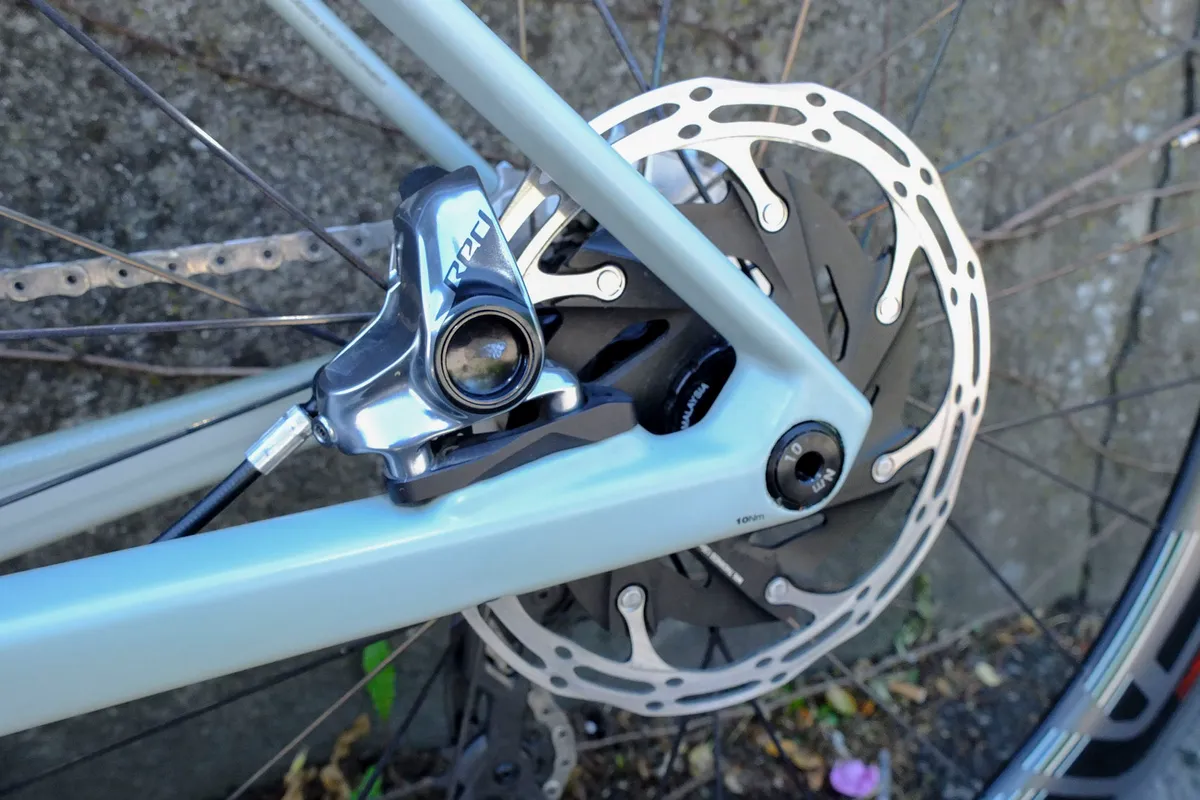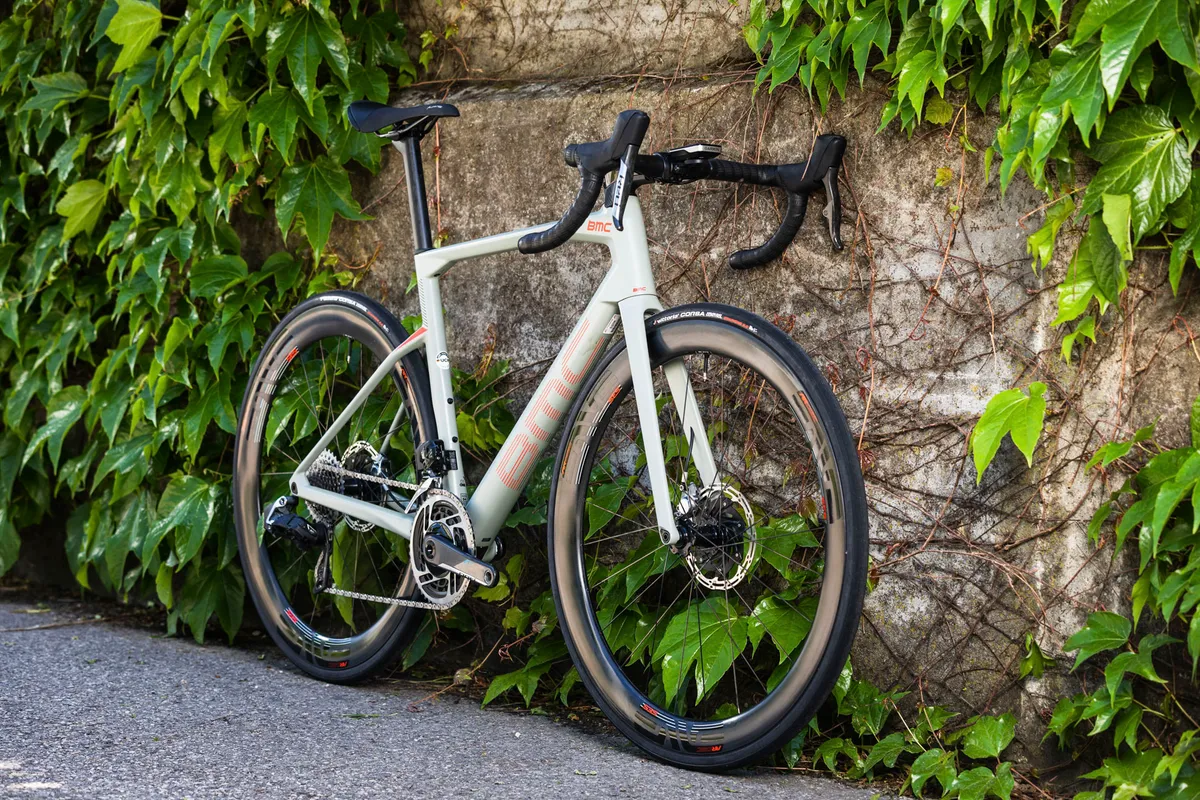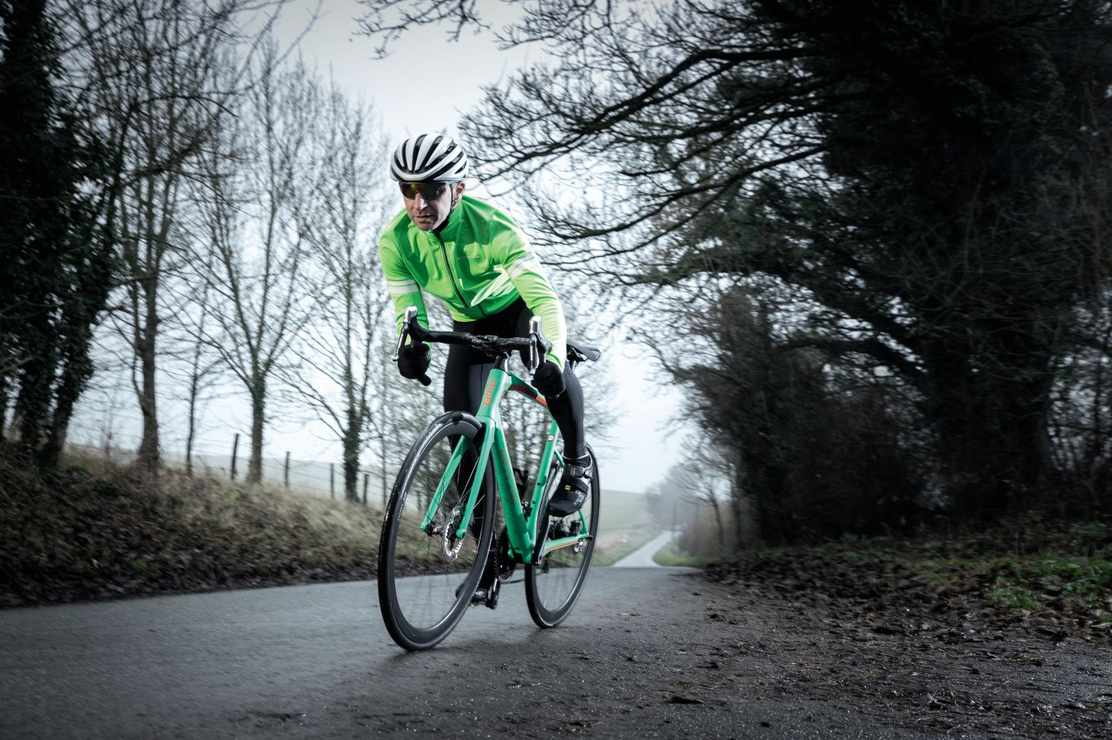Endurance bikes, as we know them today have a fairly brief history, with BMC’s first model, the GF01, being launched in 2013. A bike aimed at taming rougher surfaces, such as the northern Spring Classics, and ensuring greater rider comfort, it was BMC’s first bike to feature TCC (Tube Compliance Concept) design.
Easily visible kinks in the tube profiles, such as on Greg Van Avermaet’s Paris-Roubaix winning GF RBX, are easily understandable, and tyre volume was increased.
But wider tyres on the GF01 made it feel slower and, in 2016, the Roadmachine debuted. This disc-only endurance bike brought fast road style and amended geometry, with a relatively short head-tube and lots of integration — particularly the first BMC ICS (Integrated Cockpit System) stem.
The original Roadmachine has been very successful and has, BMC says, been the most copied bike design on the market since its launch.
Alongside its undoubted engineering and design abilities, a hugely important part of BMC’s development process is ex-MTB racer and former World and Tour de France champion, Cadel Evans. Evans’s input is invaluable to a bike’s development, and speaking at the launch, he said that of his personal stable of BMC bikes his bike of choice is always the Roadmachine.
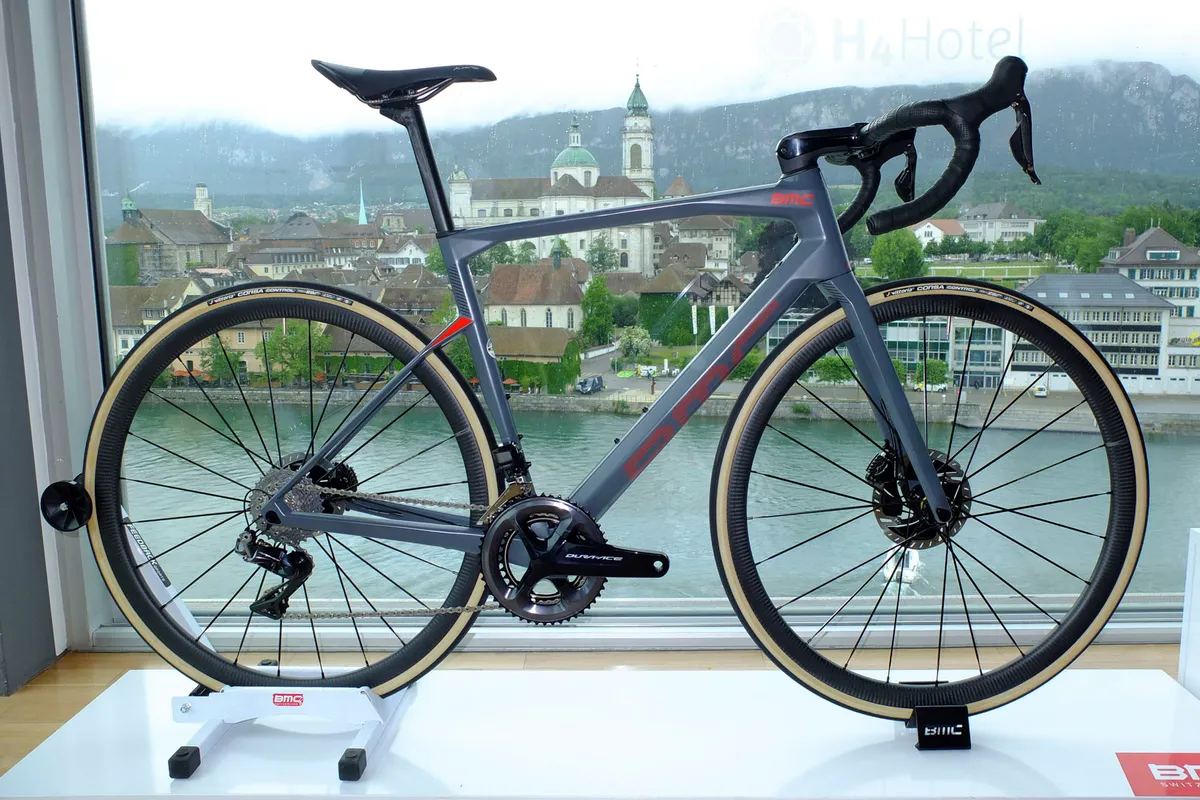
No longer marketed as a cobblestone crusher, as few riders in the real world ride them often, the Roadmachine is now termed as an all-road bike.
For 2020 the anticipated range of use has expanded from all types of tarmac (smooth, rough, broken) to mountain climbing, and at the other end of the scale, light gravel, like the Strada Bianchi. To this end, the Roadmachine now has clearances for tyres with 33mm measured width.
Just One Roadmachine
Termed ‘The One Bike Collection’, the Roadmachine aims to do it all, quickly and with great comfort.
The design goals included maintaining the Roadmachine DNA, while increasing tyre clearance and overall compliance, and offering a perfect fit for all riders while maintaining integration, as well as optimising weight and stiffness.
The 2020 Roadmachine showcases what BMC believes to be the future of all-road bikes.
Roadmachine integration
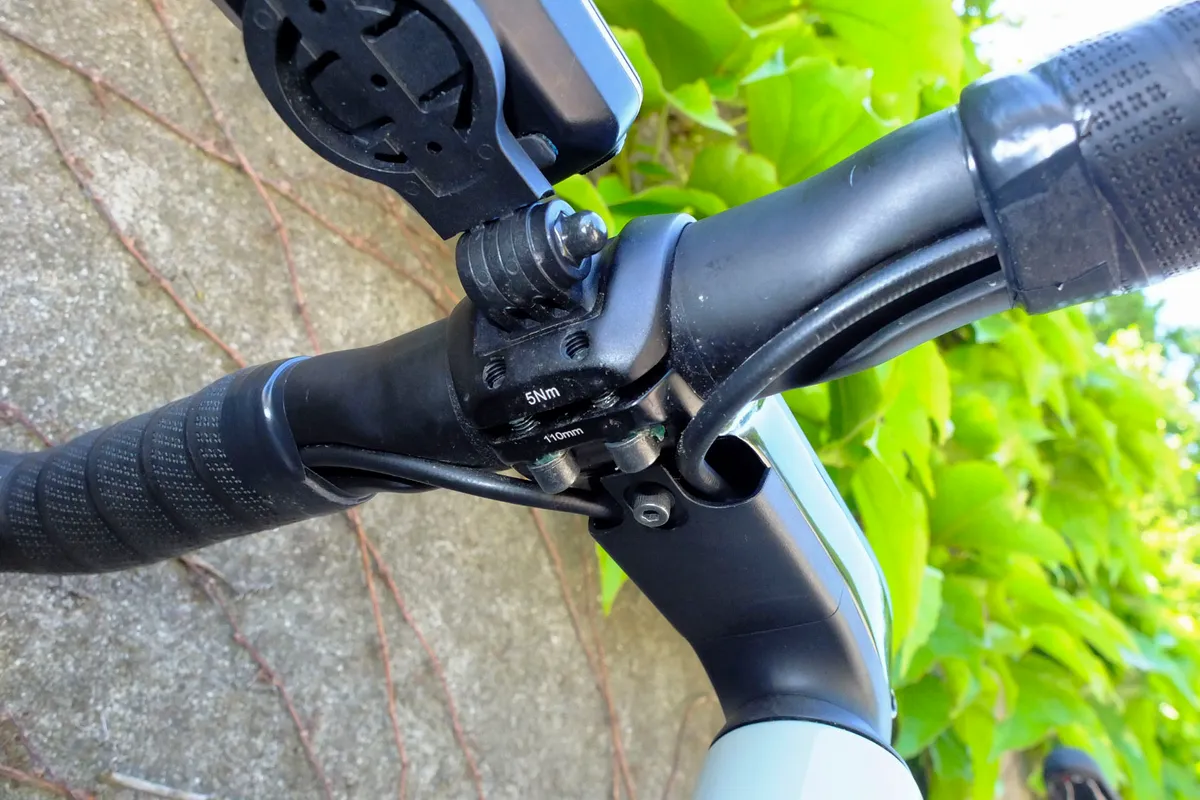
BMC’s ICS technology includes the slick-looking stem and the unseen flat-sided steerer tube, which allows brake hoses or cables and gear wires or cables, to pass within the headset and alongside the steerer, for a totally clean look — something very few current endurance bikes offer.
Unlike previous ICS setups, the Roadmachine’s cables, wires and hoses aren’t routed internally through the handlebar or stem, employing what BMC calls Stealth cable routing.
Channels moulded in to BMC’s own carbon fibre handlebar guide cables to the stem, where they’re concealed above removable covers beneath the alloy stem and channelled through the head tube.
Split puzzle spacers can be removed or added without the need to disconnect anything. The design has no negative effect on steering and the ICS stem’s open faceplate accepts proprietary out-front GPS/camera/accessory mounts for further integration.
Roadmachine frameset features
Said to be smoother and faster than before, the new Roadmachine is still designed using TCC, but without the visibly kinked tube profiles, instead creating Angle Compliance with specific tube shaping.
Its carbon layup is tuned for endurance, focussing on compliance and low weight, with the frame, fork and seatpost working as a system, whatever the terrain. BMC claims that a 54cm frame in its lightest finish weighs 895g.
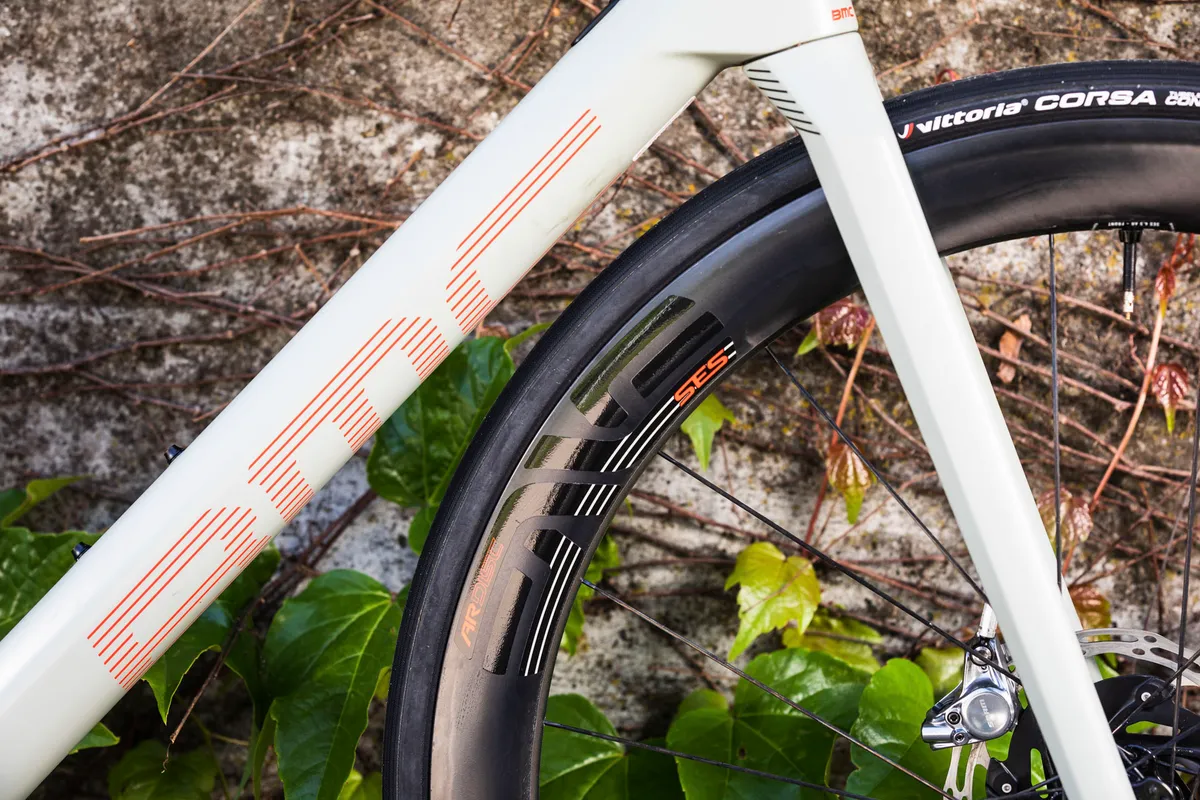
Up front the fork has slimmed-down asymmetric legs, first seen on the current SLR01, to equalise the stresses from braking, with the left-side fork leg’s profile around 20 percent larger when measured front to back.
It’s 10 percent stiffer for greater high-speed control and has a proprietary integrated disc caliper adaptor too, to perfectly suit fork shape.
The seat tube’s lower half has a rear wheel cutout that tucks the wheel in and also improves compliance. The chainstays are flat-topped with a tapering lower edge and the seatstays are flattened with BMC’s trademark dropped junction with the seat tube.
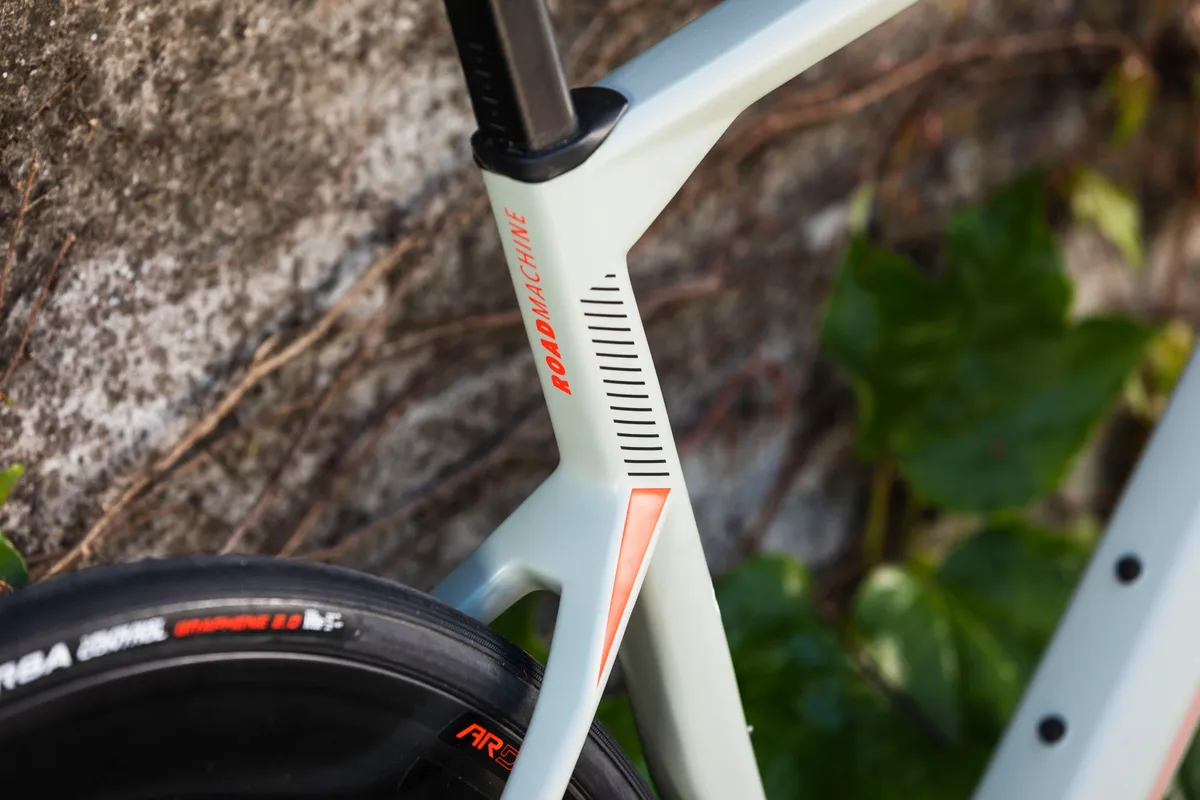
The carbon seatpost maintains its D-shaped, flattened rear profile, but has a new TCC endurance layup.
Integrating the seatpost’s clamp within the frame increases the amount of exposed seatpost by 20mm, generating more flex. Instead of the frame-mounted fender mounts fitted to the previous Roadmachine, the new bike has a seatpost-fitting option, in the style of an Ass-Saver, called DFender (after the seatpost shape), which fits with a single bolt behind the saddle clamp.
The frame can incorporate Shimano’s Di2 control box in the down tube, as on the SLR01, and the bottom bracket shell includes a built-in, adjustable chain catcher.
Interestingly, the top tube has a fuel box/bag mounting point behind the stem, something that could be useful for endurance riders. BMC says it's working on a specific bag to fit this bike, which should launch later in the year.
Roadmachine geometry and specifications
The new Roadmachine frame offers a more natural stack and reach progression across its six frame sizes, has two seatpost offsets (0 and 15mm), plus 10 stem sizes.
Stems with 0-degree rise will be available in 55mm, 70mm, 80mm, 90mm and 100mm, and with -12 degree angle in 90mm–130mm. BMC says it has doubled the fitting range per frame size with the range of stems.
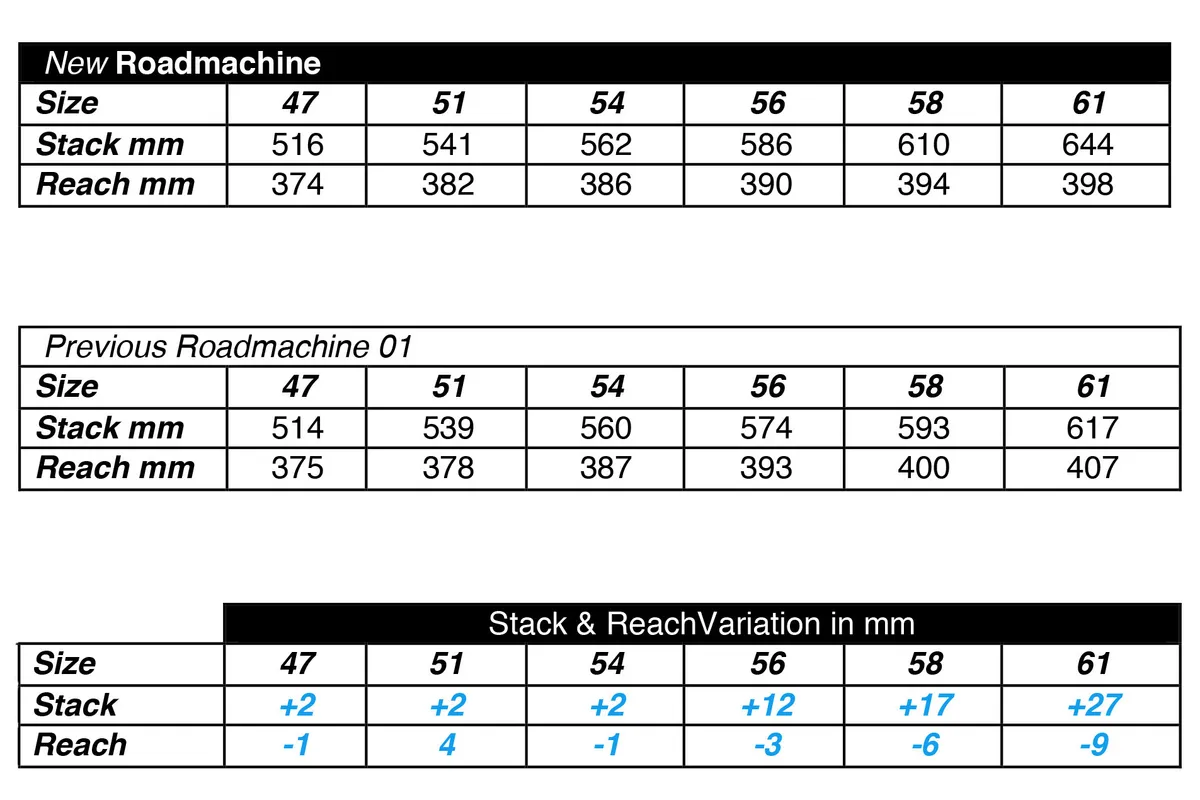
Compared to the 2017 model, the 2020 Roadmachine’s stack and reach increase quite sharply after the 56cm frame size. This minimises the need for spacers and increases the distance between the headset bearings.
The previous top-tube cutout with recessed headset top cap has gone and the head tube extends upwards slightly instead. Each bike is supplied with two headset top caps in low or high sizes.
Compared to the 2017 Roadmachine, torsional stiffness is claimed to be over 20 percent higher, improving handling and is consistent across every frame size, something that BMC says can vary markedly in some competitor bikes, with small sizes feeling too stiff and large bikes too flexy.
The fork rake is different for smaller sizes too, maintaining equivalent handling. Power transfer, measured at the bottom bracket is over 5 percent higher, while compliance, measured at the saddle, is at least 25 percent greater and front-end compliance has improved by 15 percent.
BMC Roadmachine 2020 range and pricing
The new model will be available in two levels, Roadmachine 01 and Roadmachine 02, with seven complete bike models in all, plus two Roadmachine 01 frameset modules. Frame sizes are 47cm, 51cm, 54cm, 56cm, 58cm and 61cm.
The Roadmachine 01 models are named ONE, TWO, THREE and FOUR. They’re all-electronic and offer SRAM Red AXS, Shimano Dura-Ace Di2, SRAM Force AXS and Shimano Ultegra Di2.
Roadmachine 02 models don’t have the ICS integrated stem and the ONE, TWO and THREE bikes, respectively, have Shimano Ultegra Di2, Shimano Ultegra and Shimano 105 drivetrains.
The new Roadmachine will be available from the start of July.
BMC Roadmachine 01 ONE
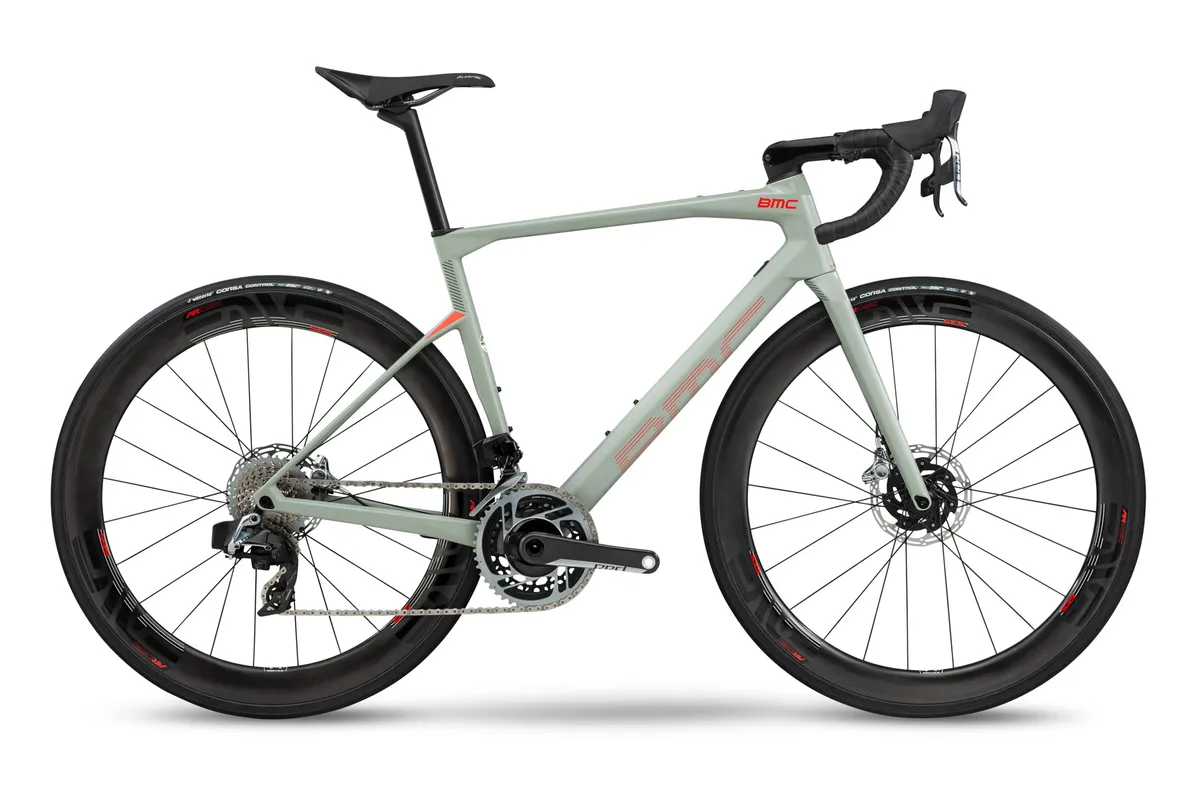
- £10,999, $10,999 / €10,499 / AU$13,799
BMC Roadmachine 01 TWO
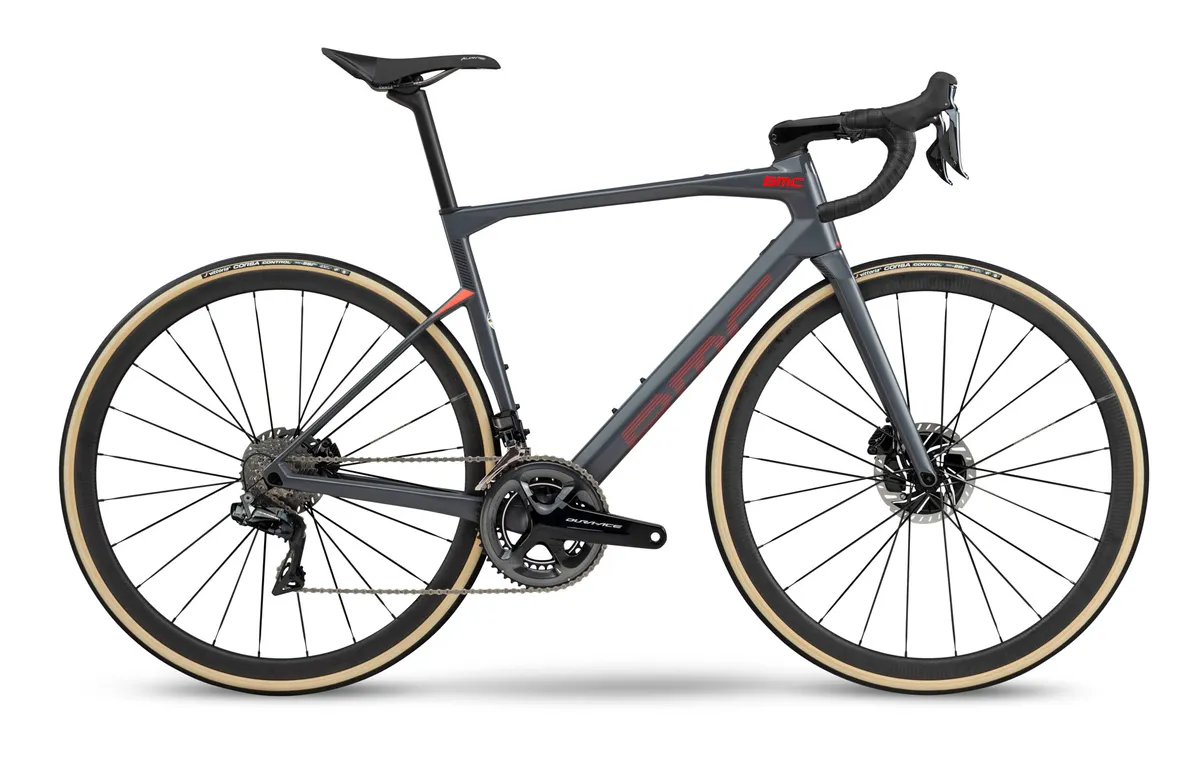
- £9,499 / $9,999 / €9,499 / AU$12,499
BMC Roadmachine 01 THREE
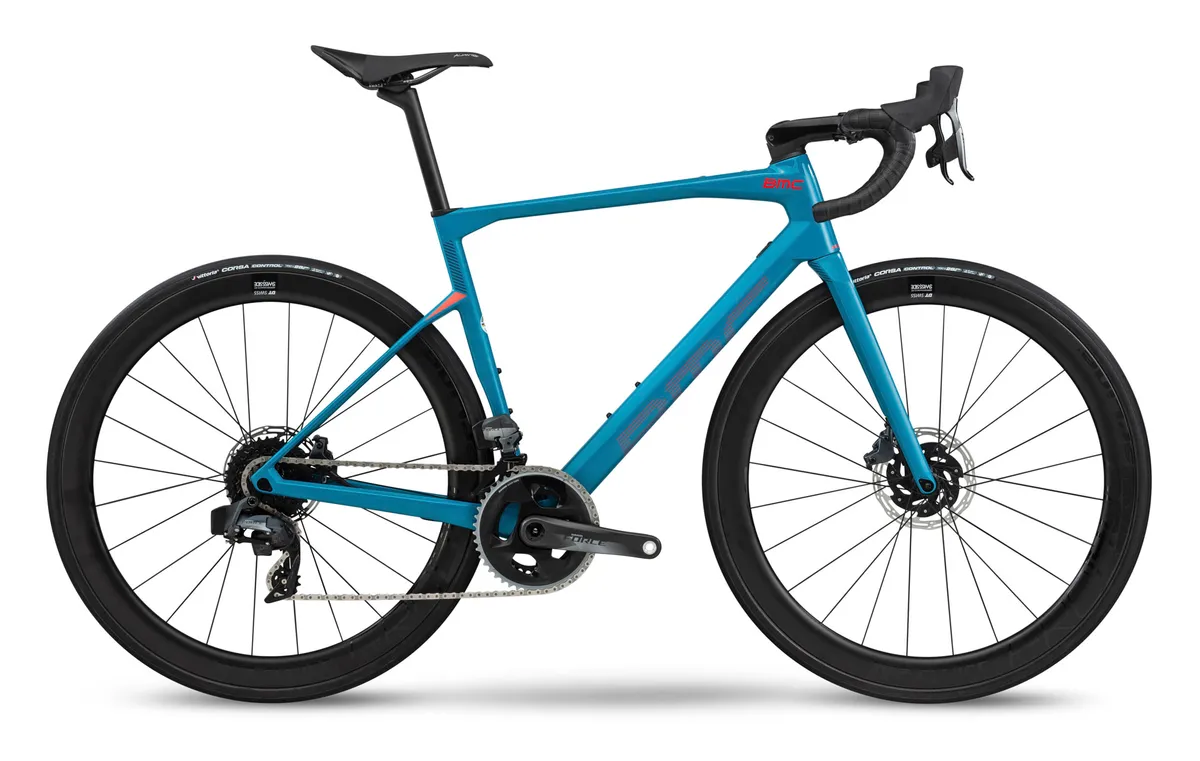
- £6,999 / $7,699 / €7,299 / AU$9,999
BMC Roadmachine 01 FOUR
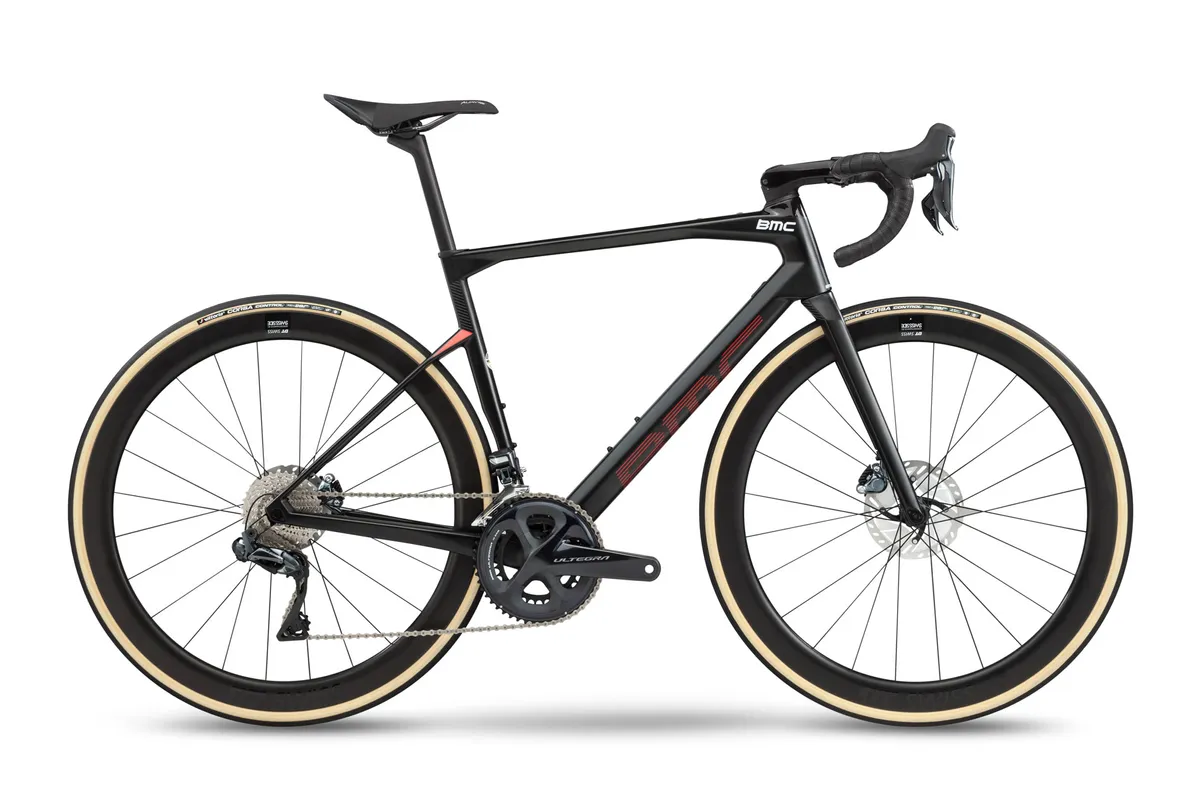
- £6,699 / $7,299 / €6,799 / AU$9,499
BMC Roadmachine 02 ONE
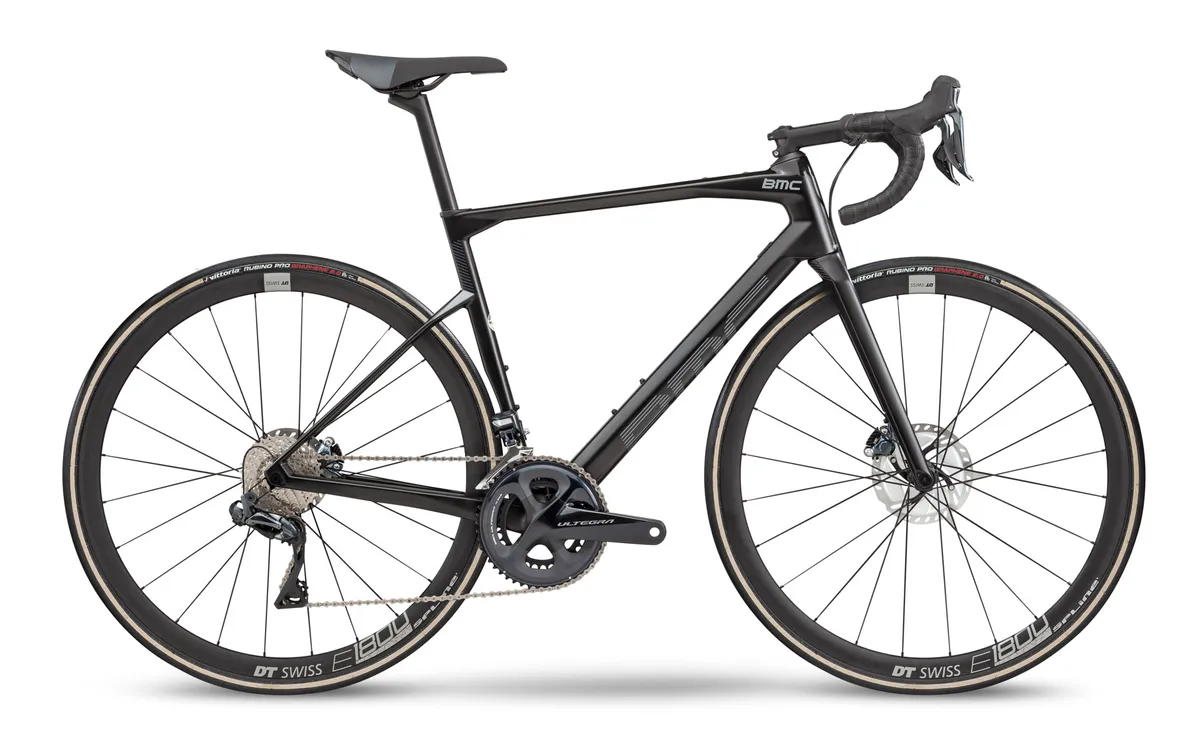
- £4,899 / $4,999 / €4,699 / AU$6,499
BMC Roadmachine 02 TWO
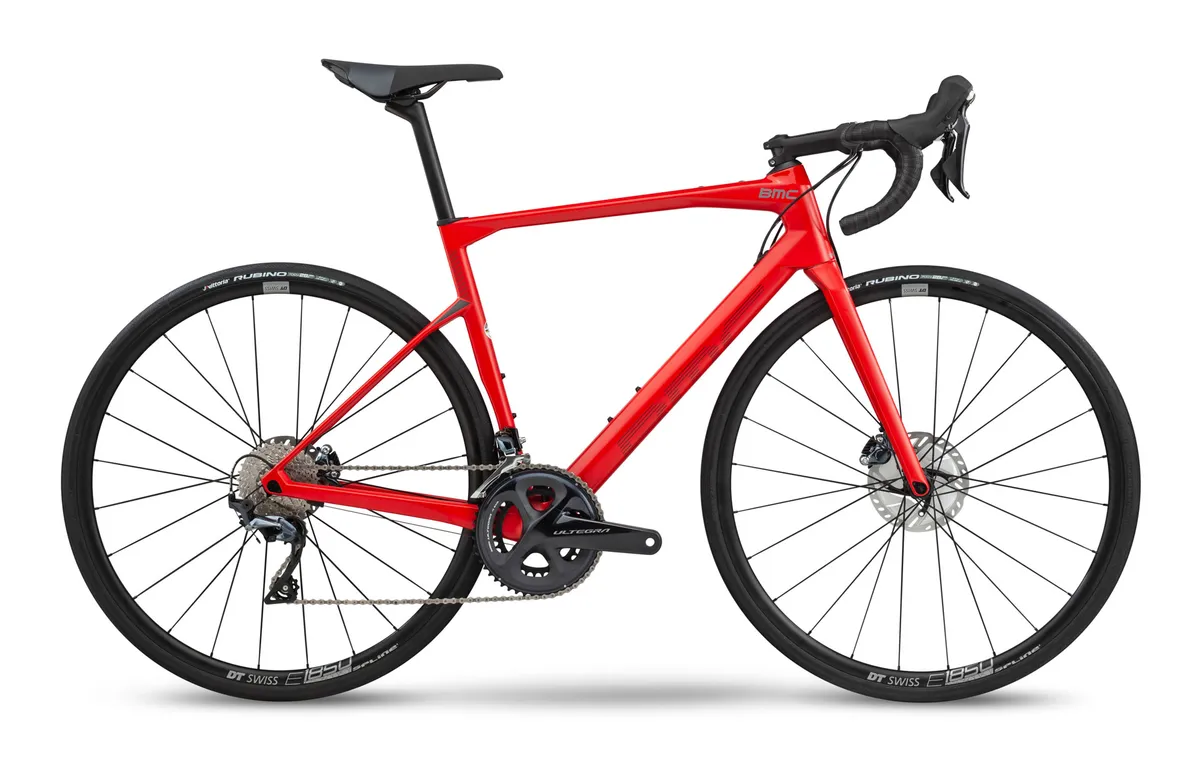
- £3,899 / $3,999 / €3,699 / AU$5,199
BMC Roadmachine 02 THREE
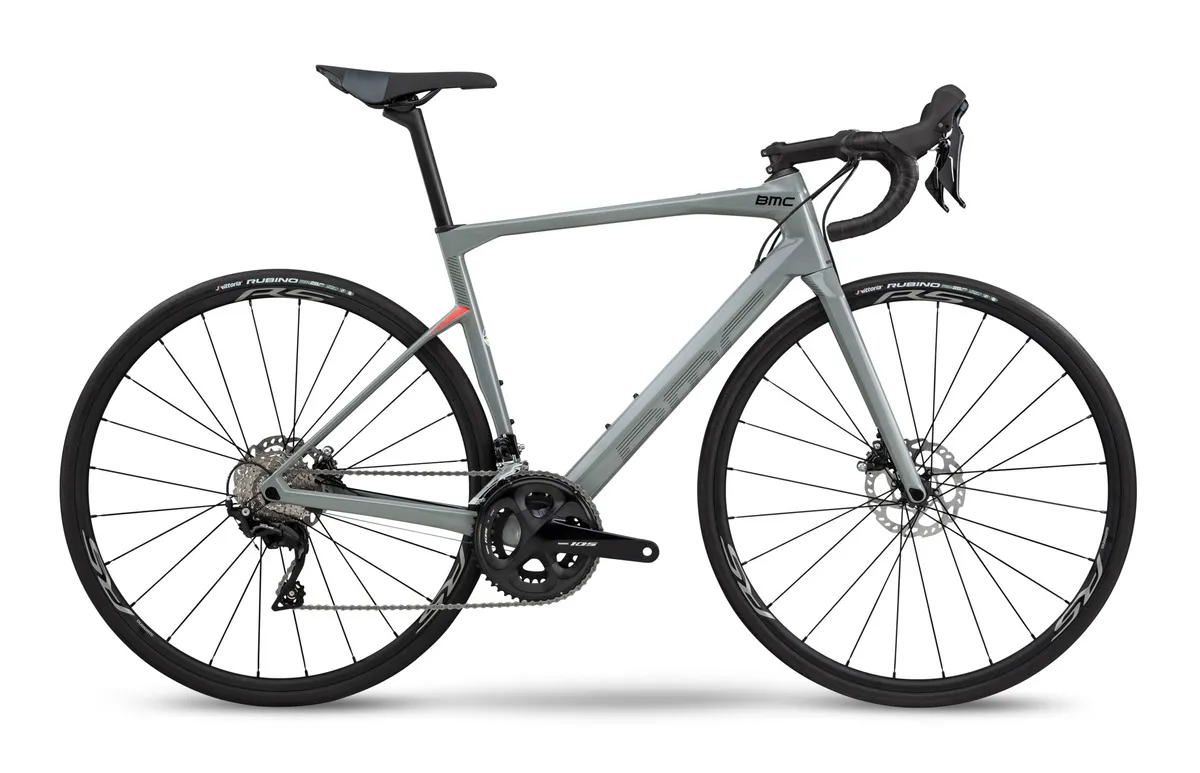
- £2,999 / $3,199 / €2,999 / AU$4,199
BMC Roadmachine 01 ICS frameset modules
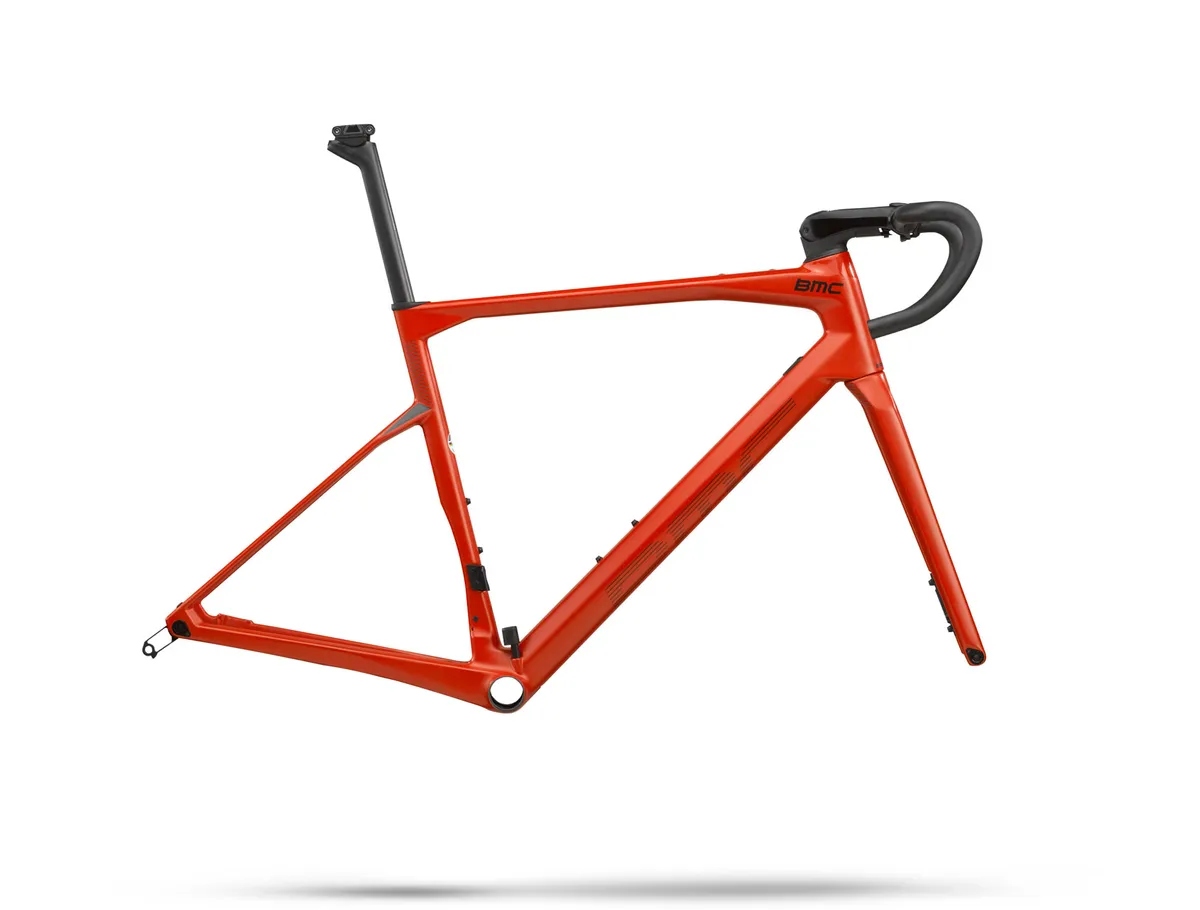
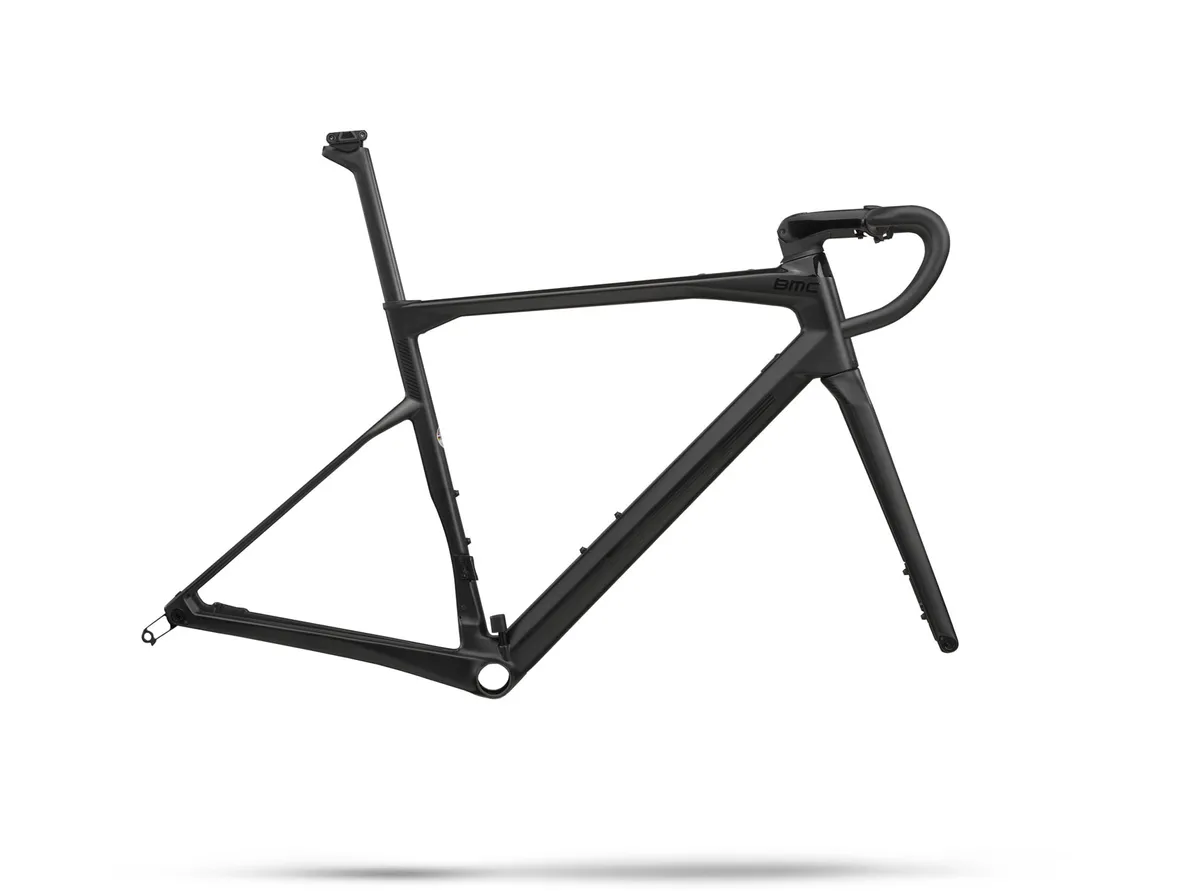
- £3,999 / $4,399 / €4,099 / AU$5,899
